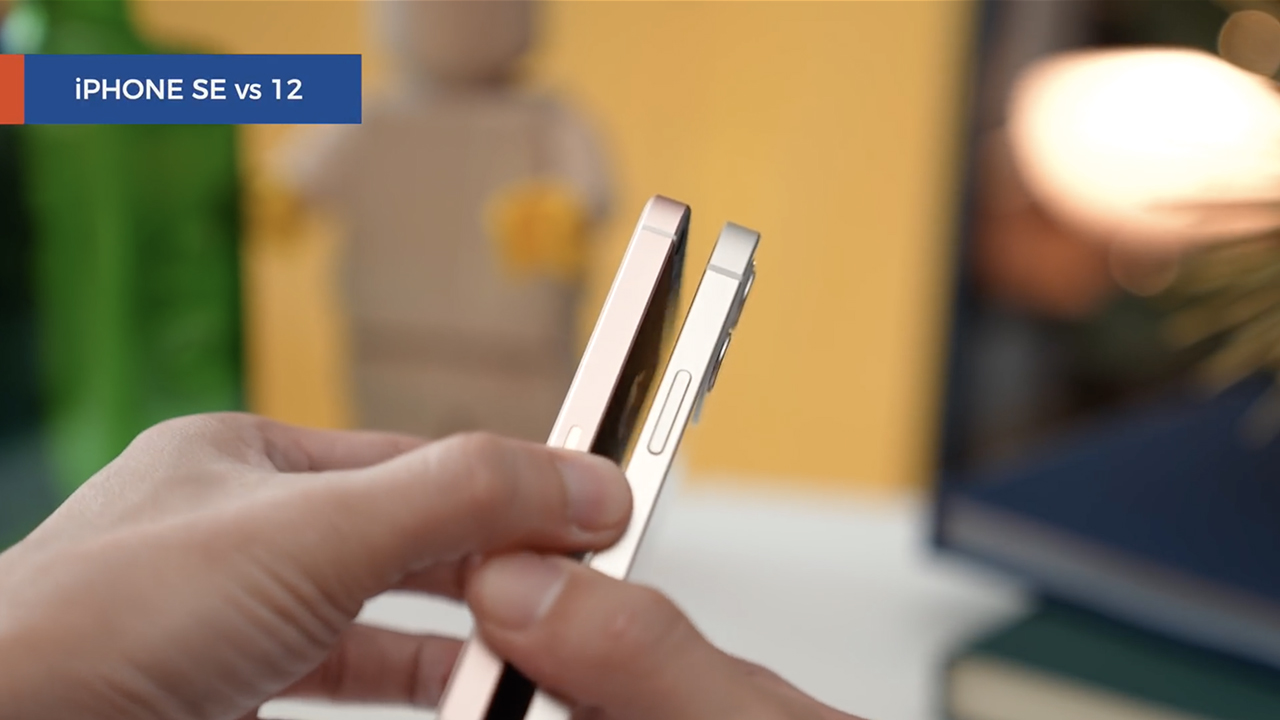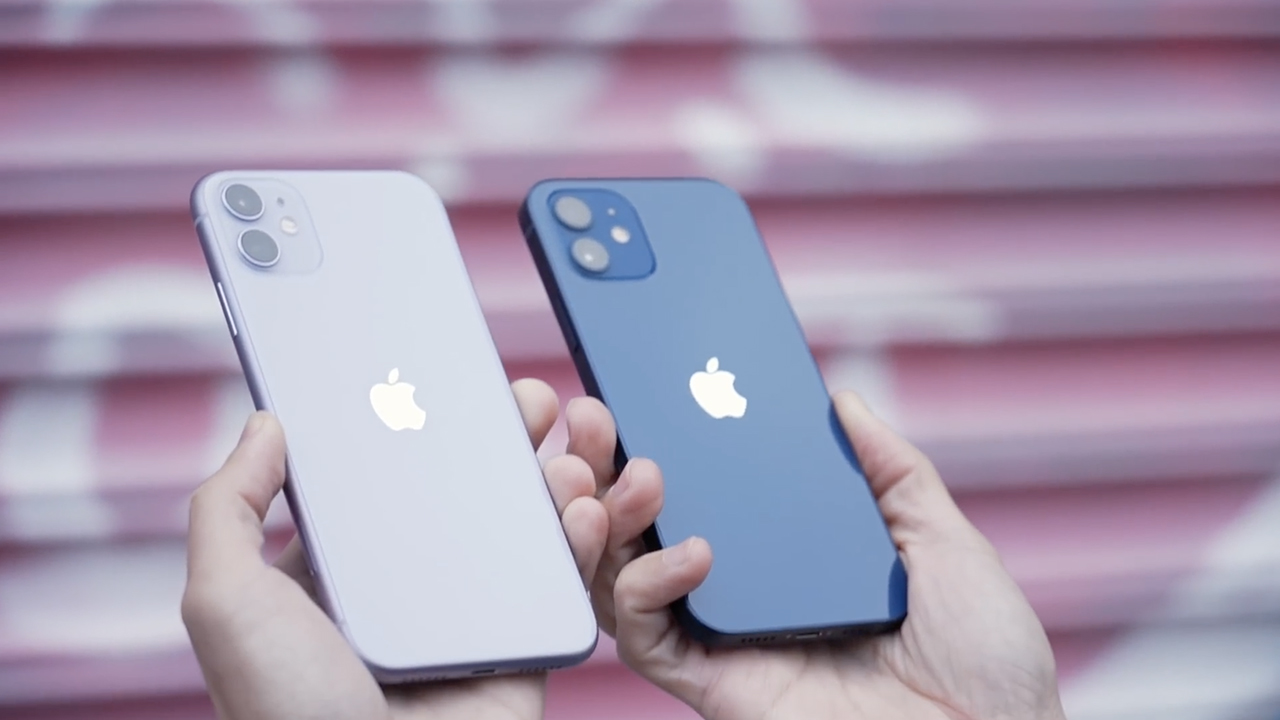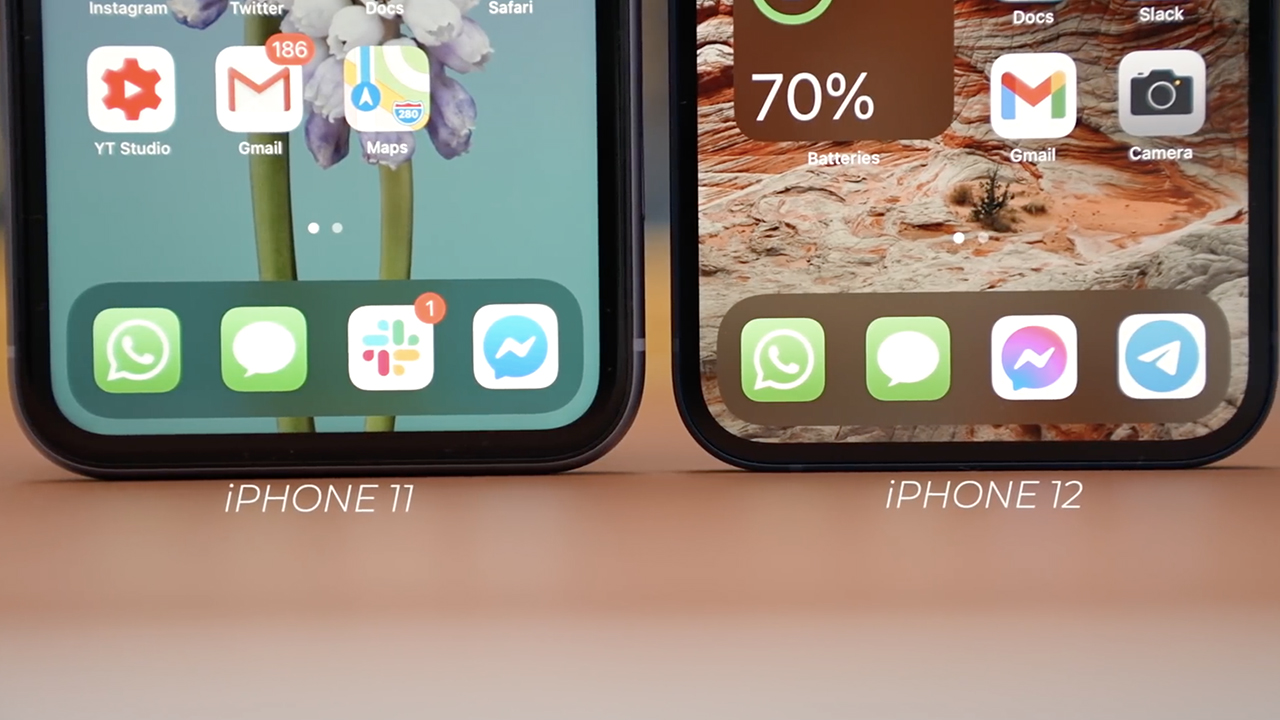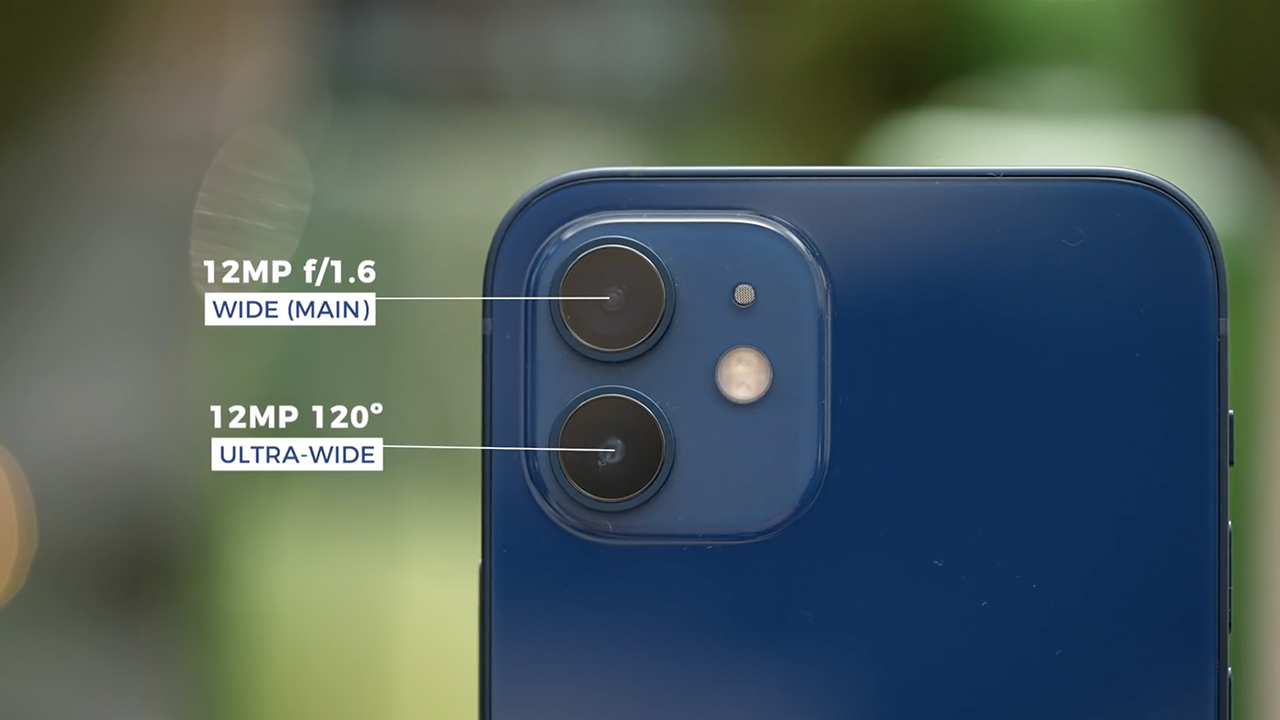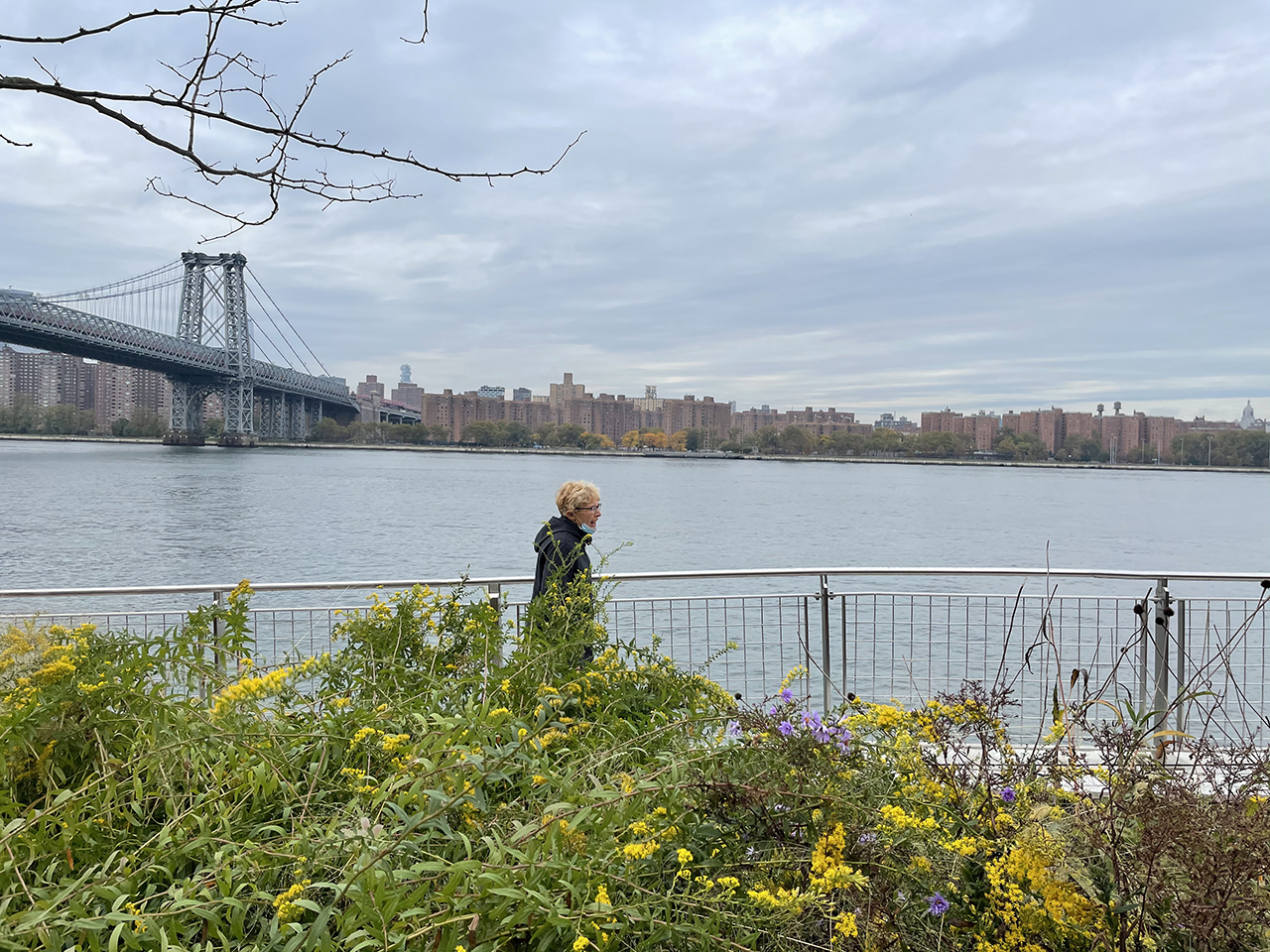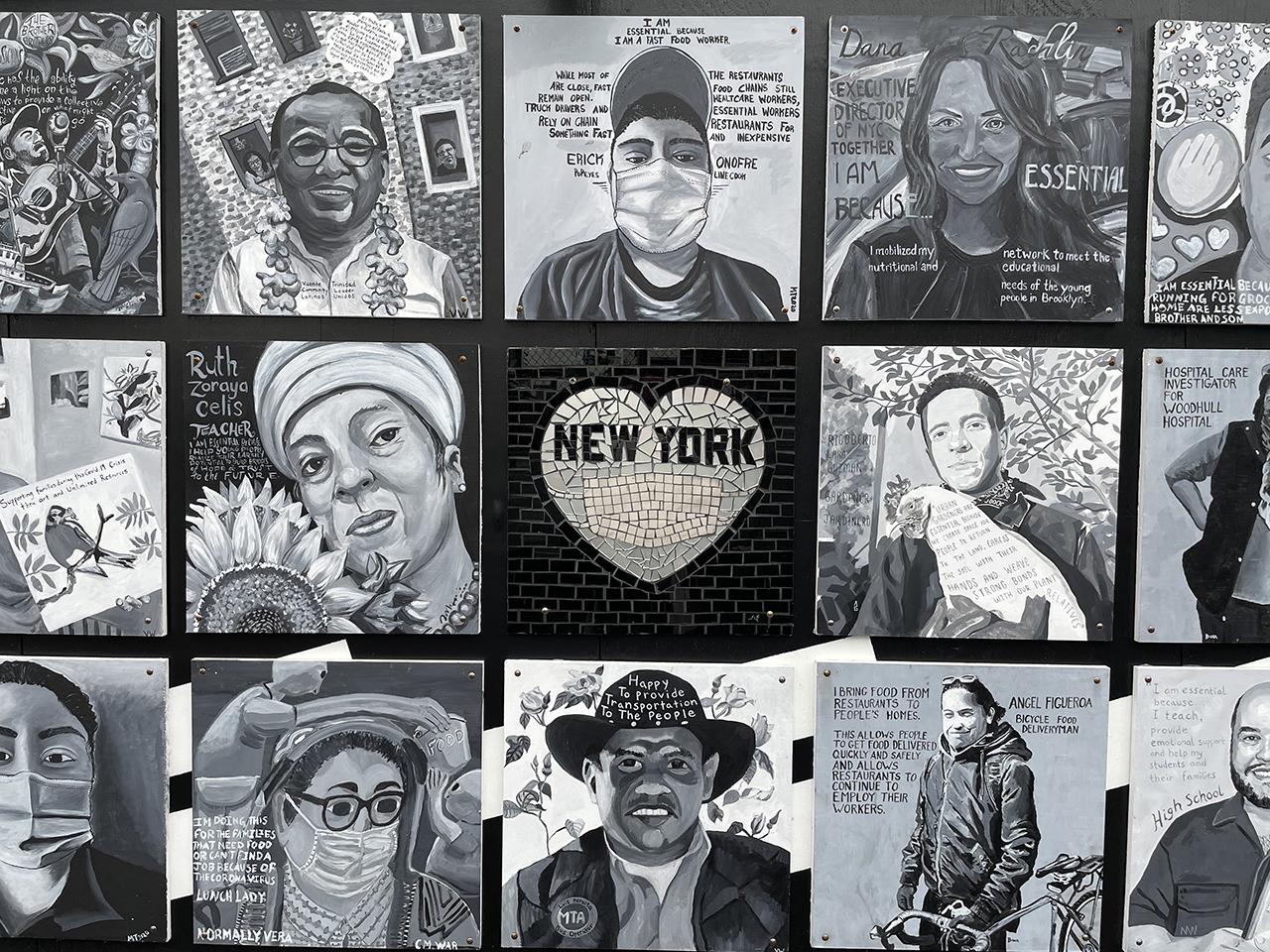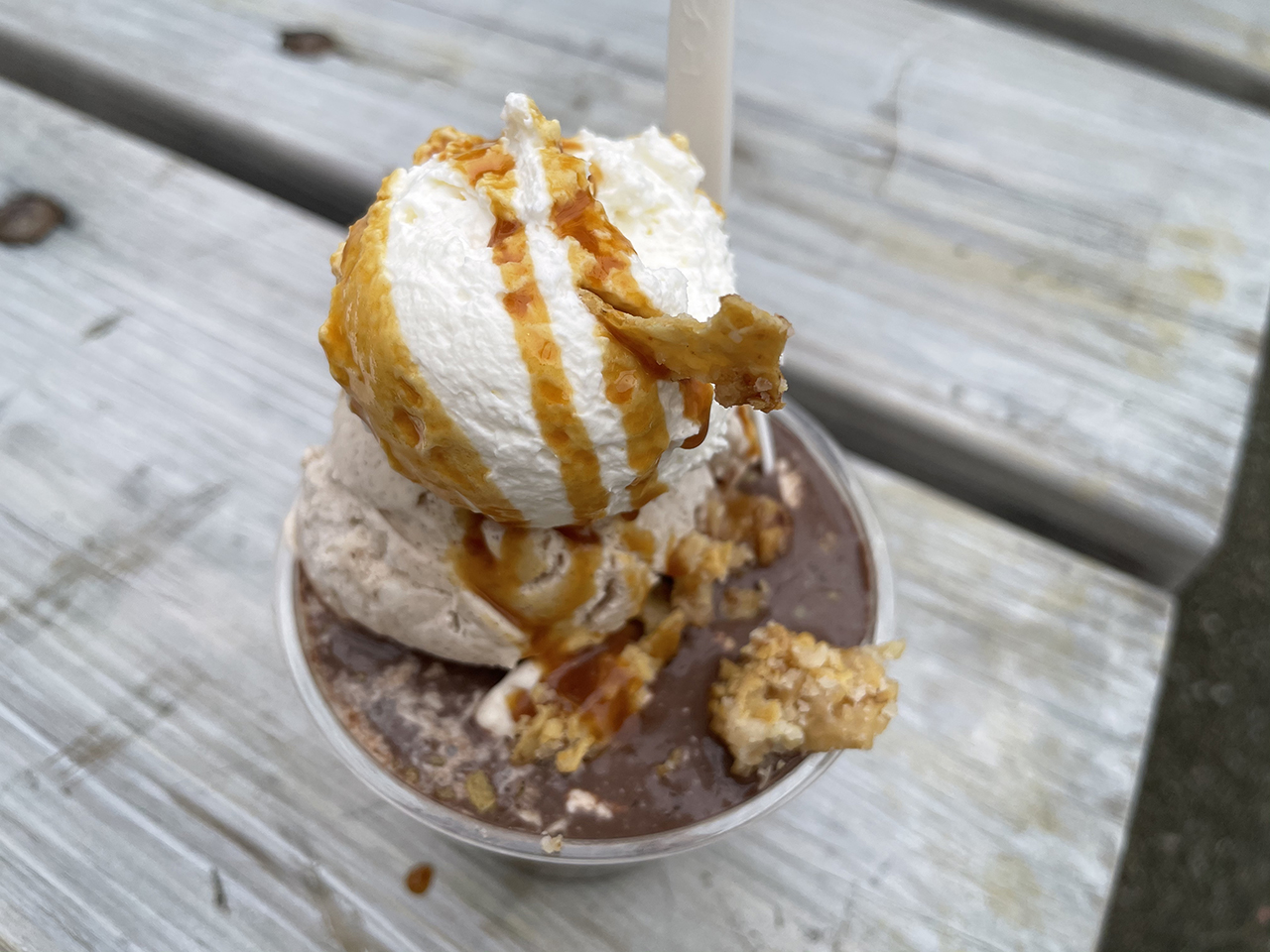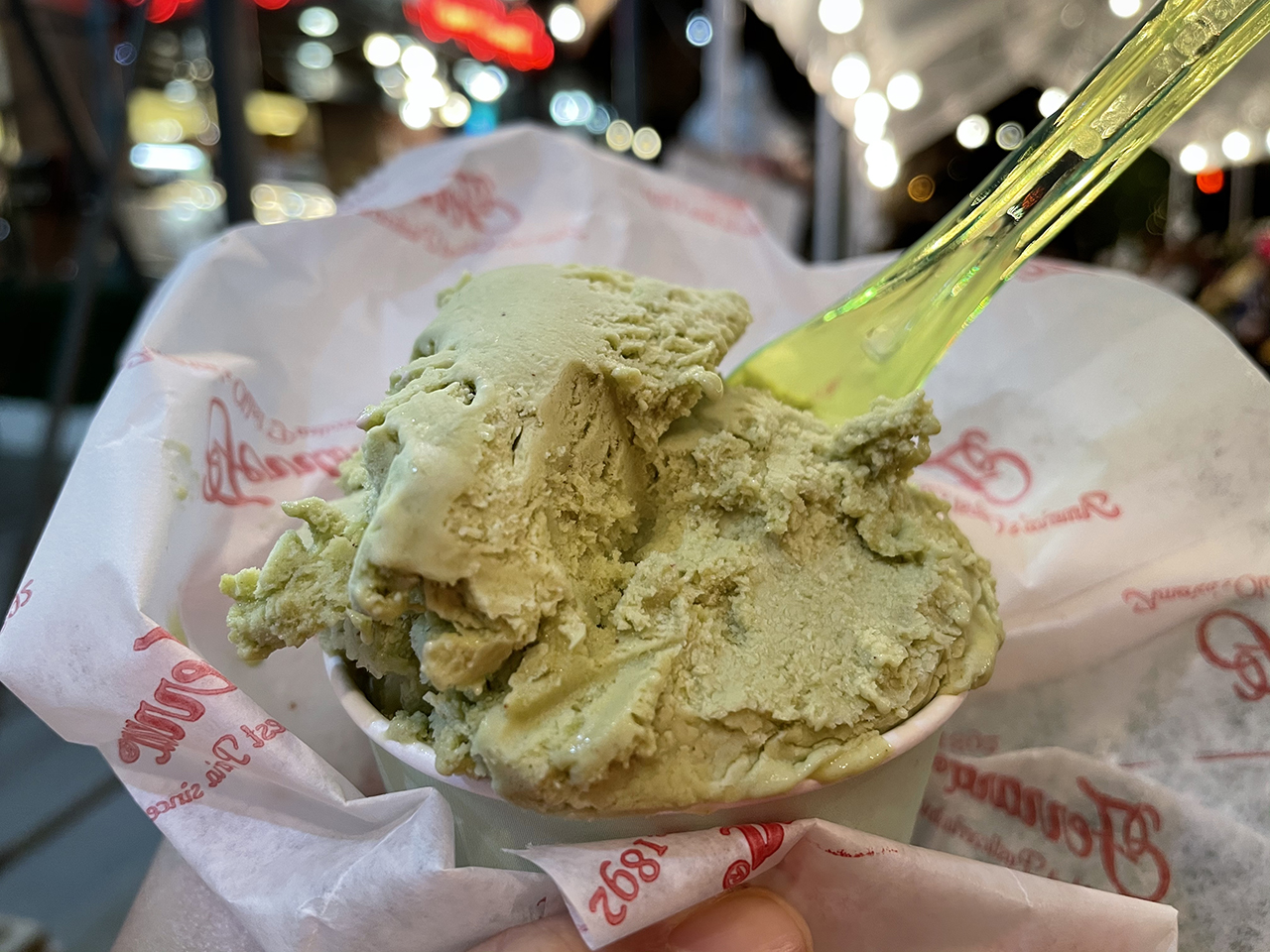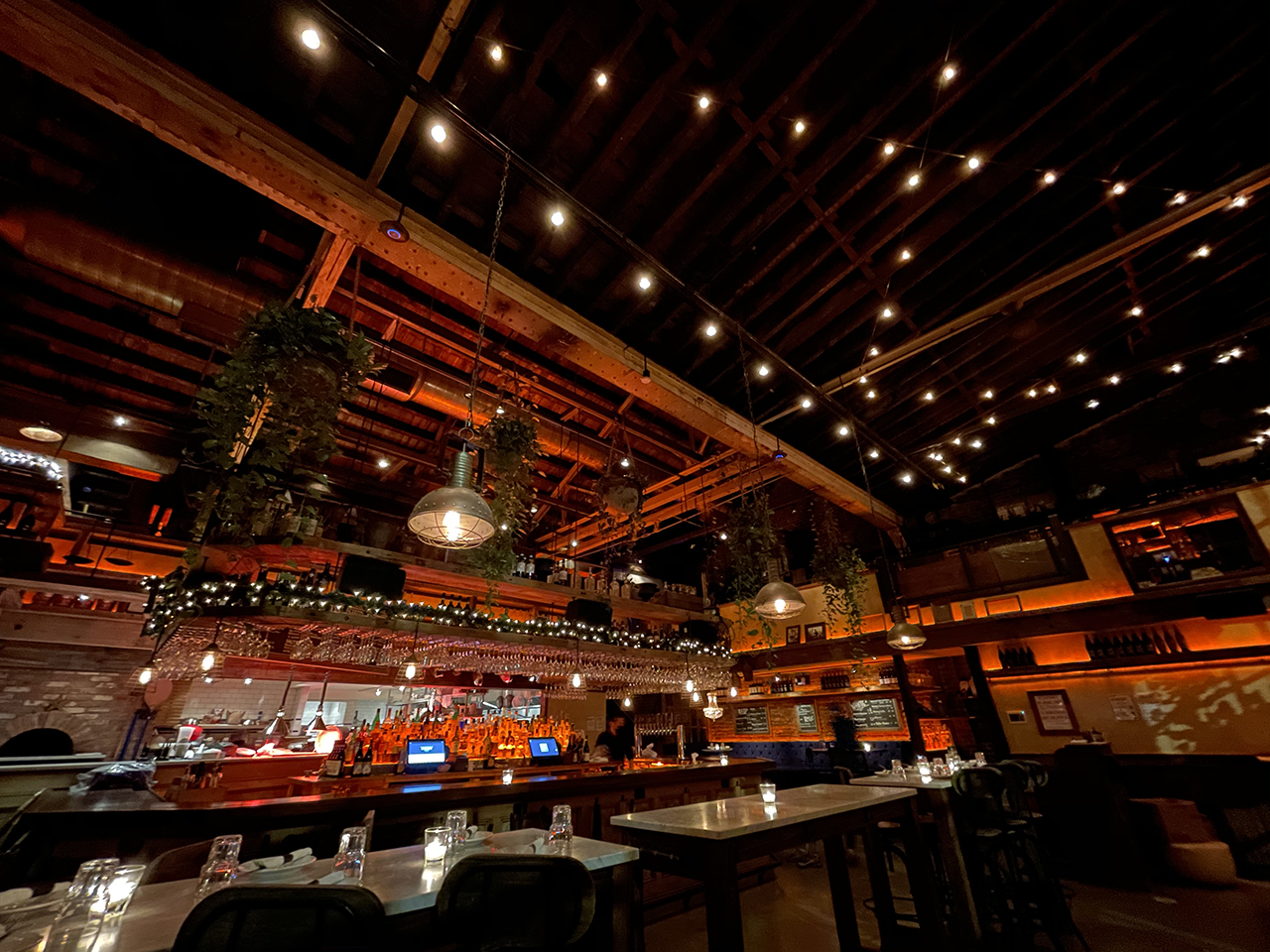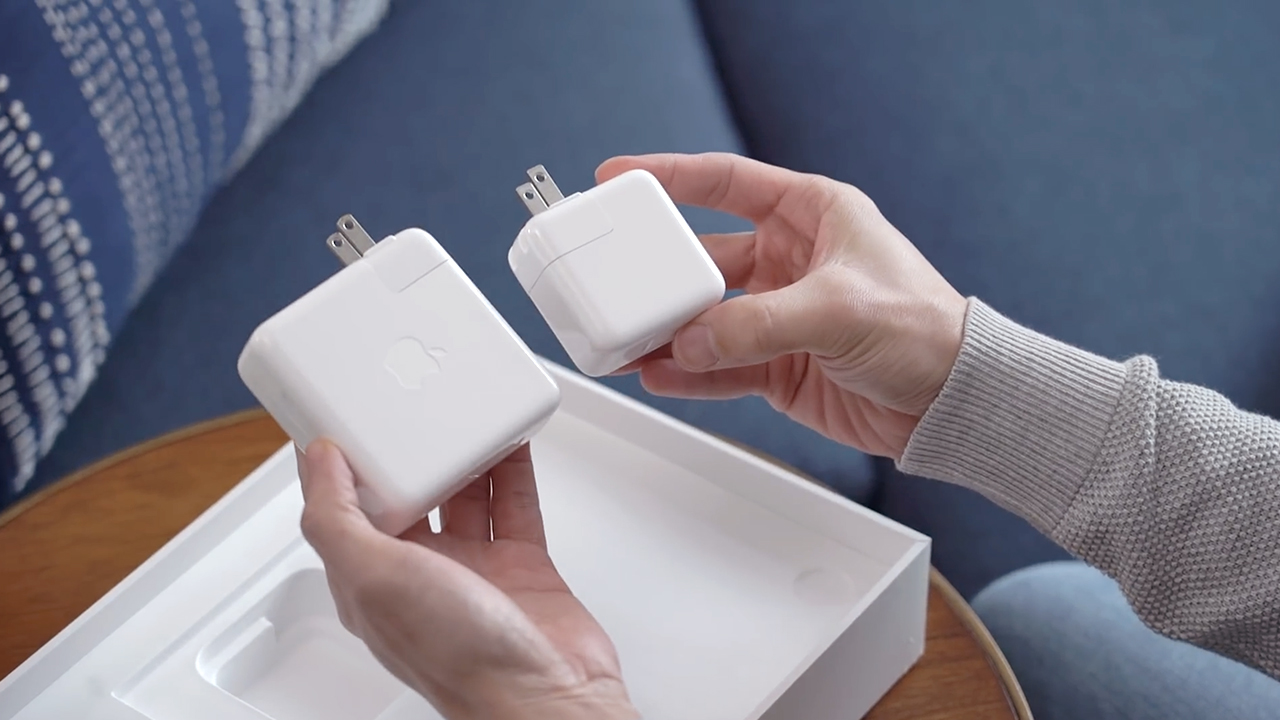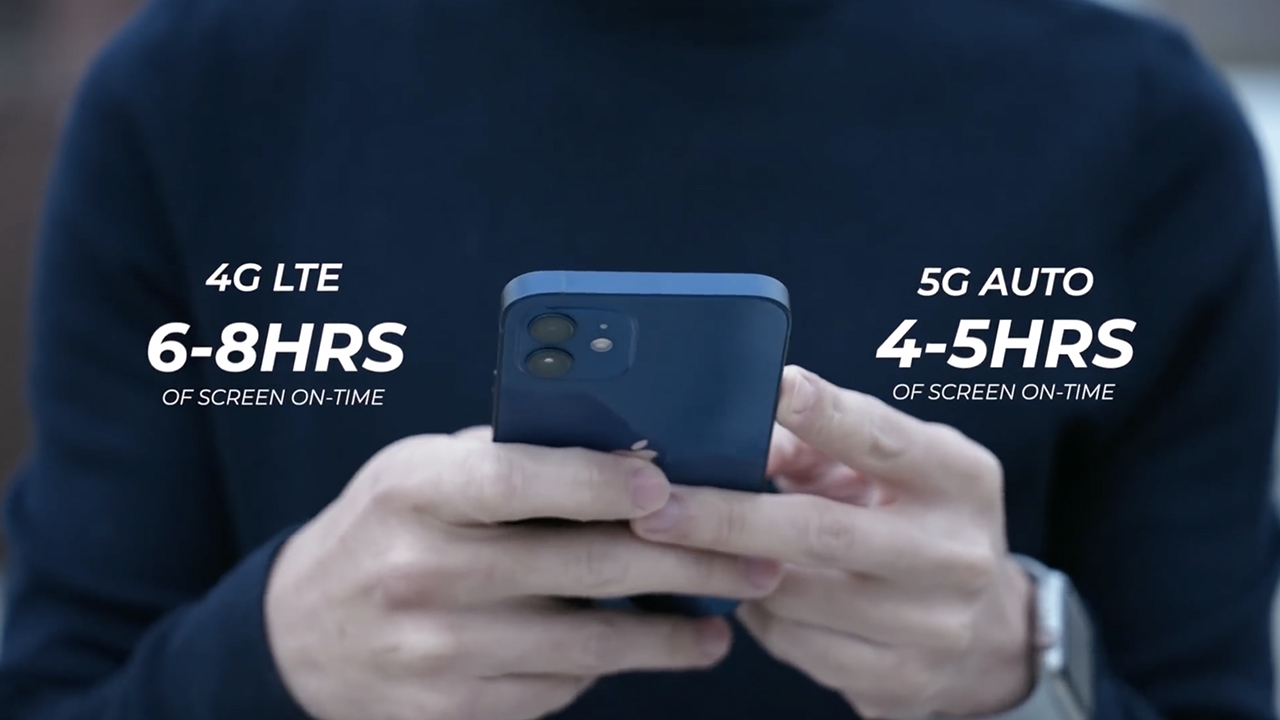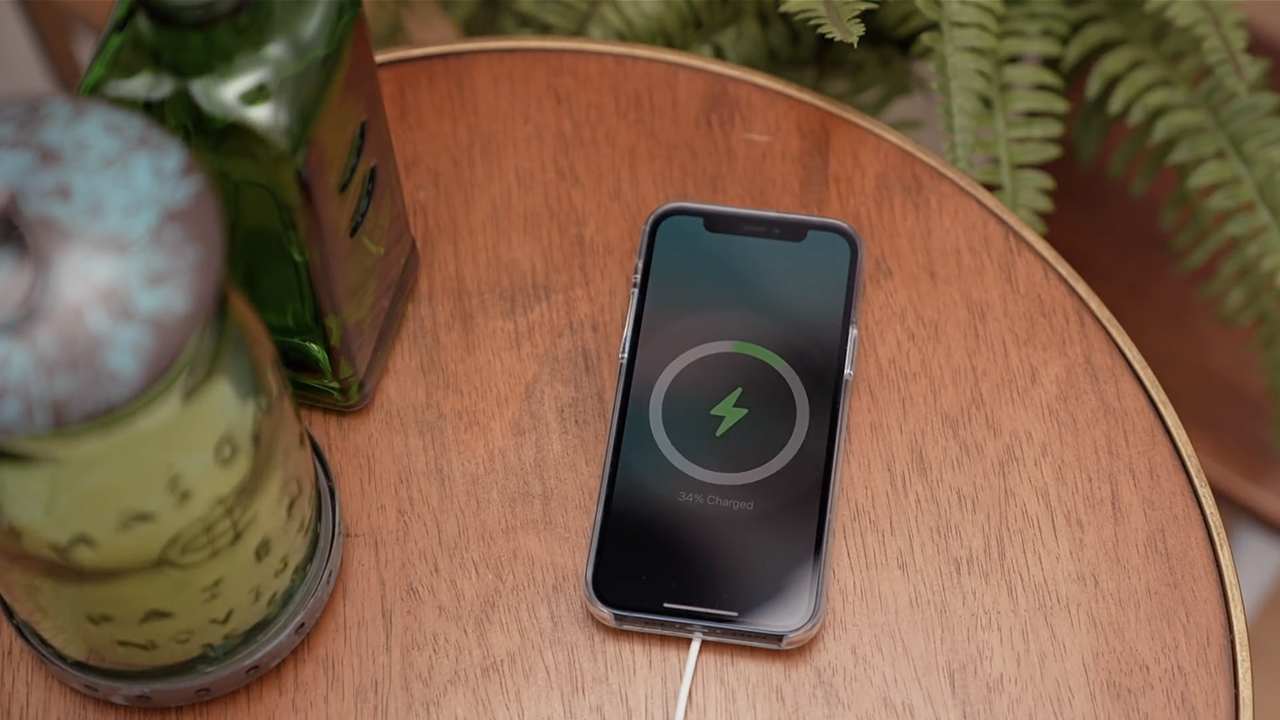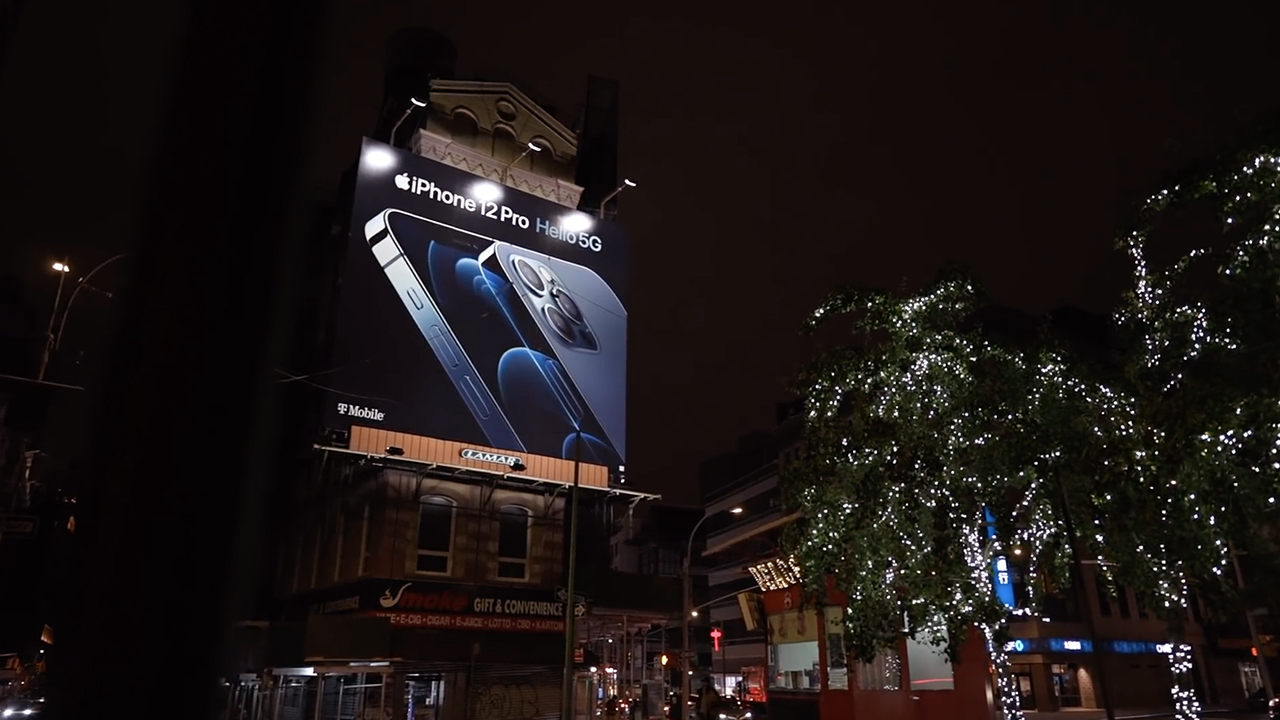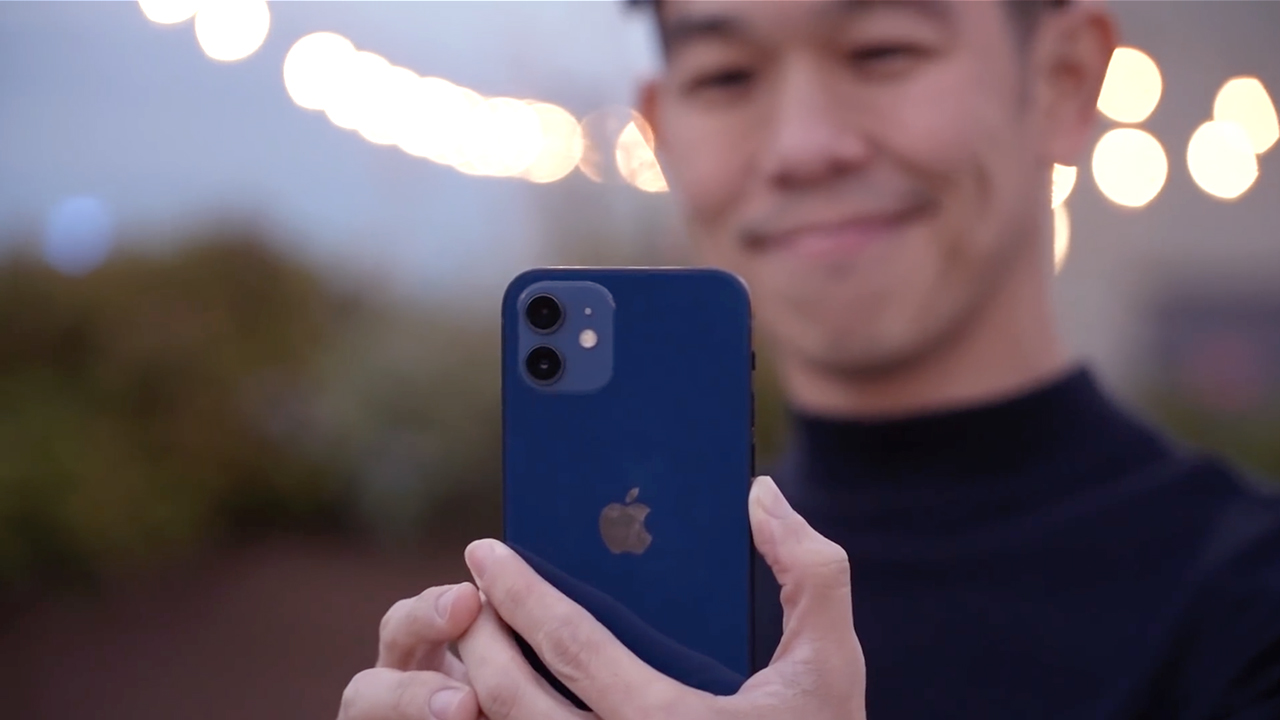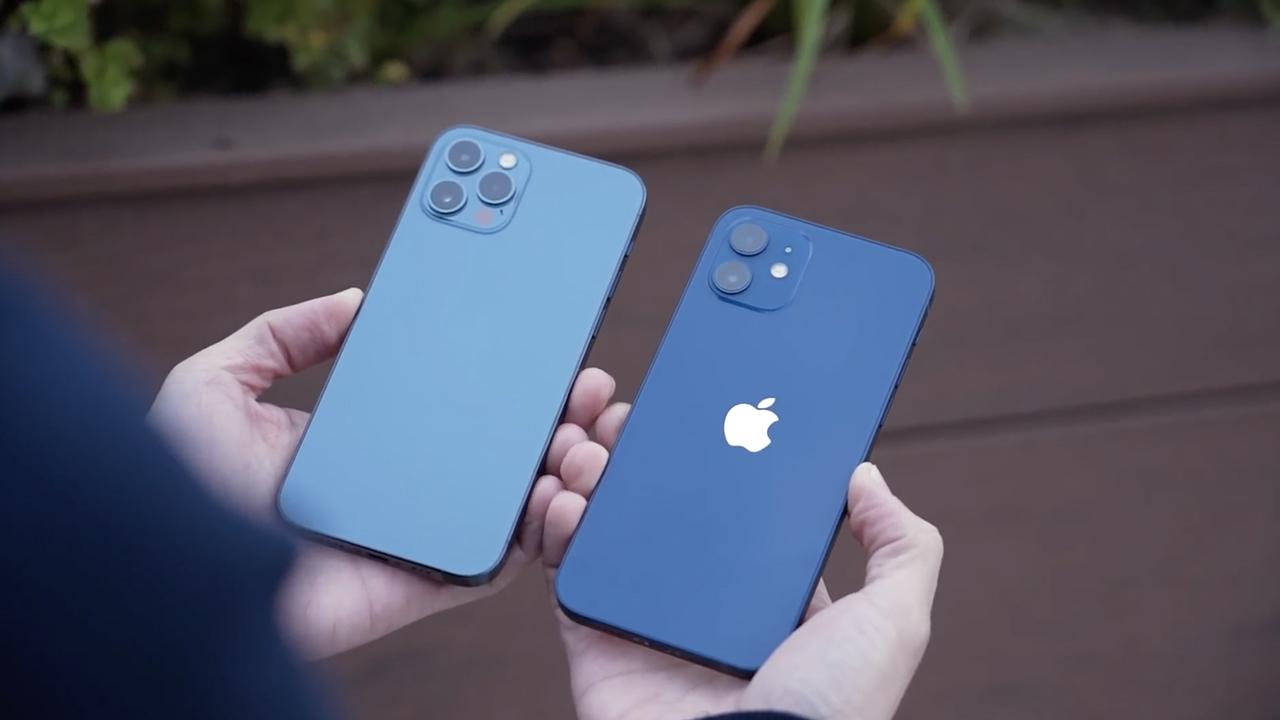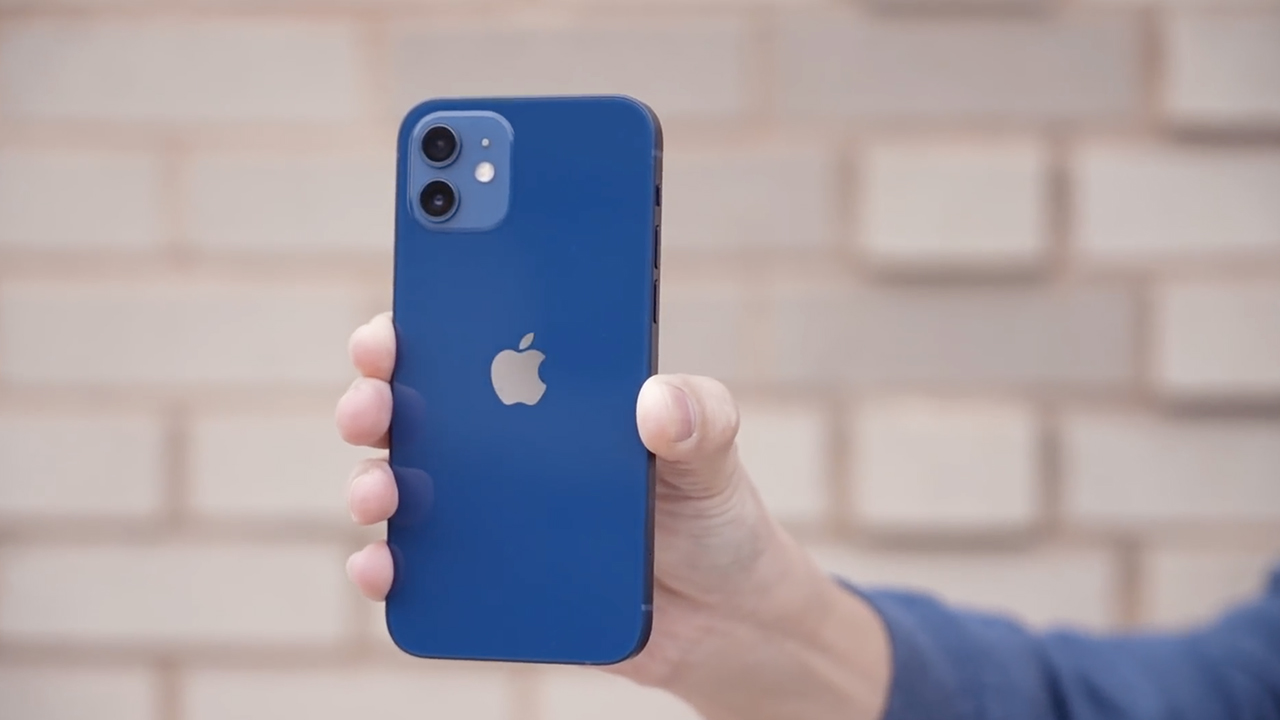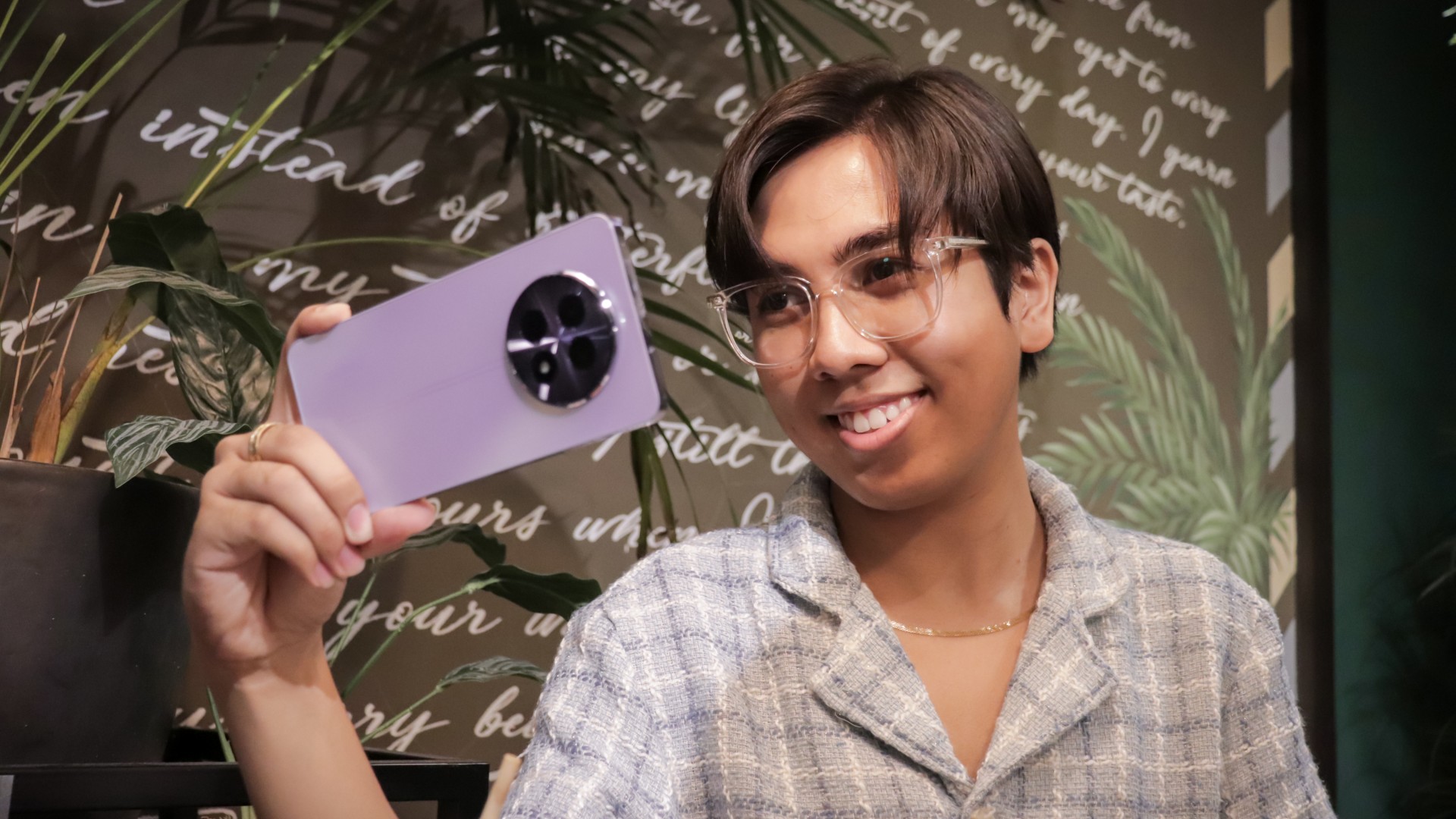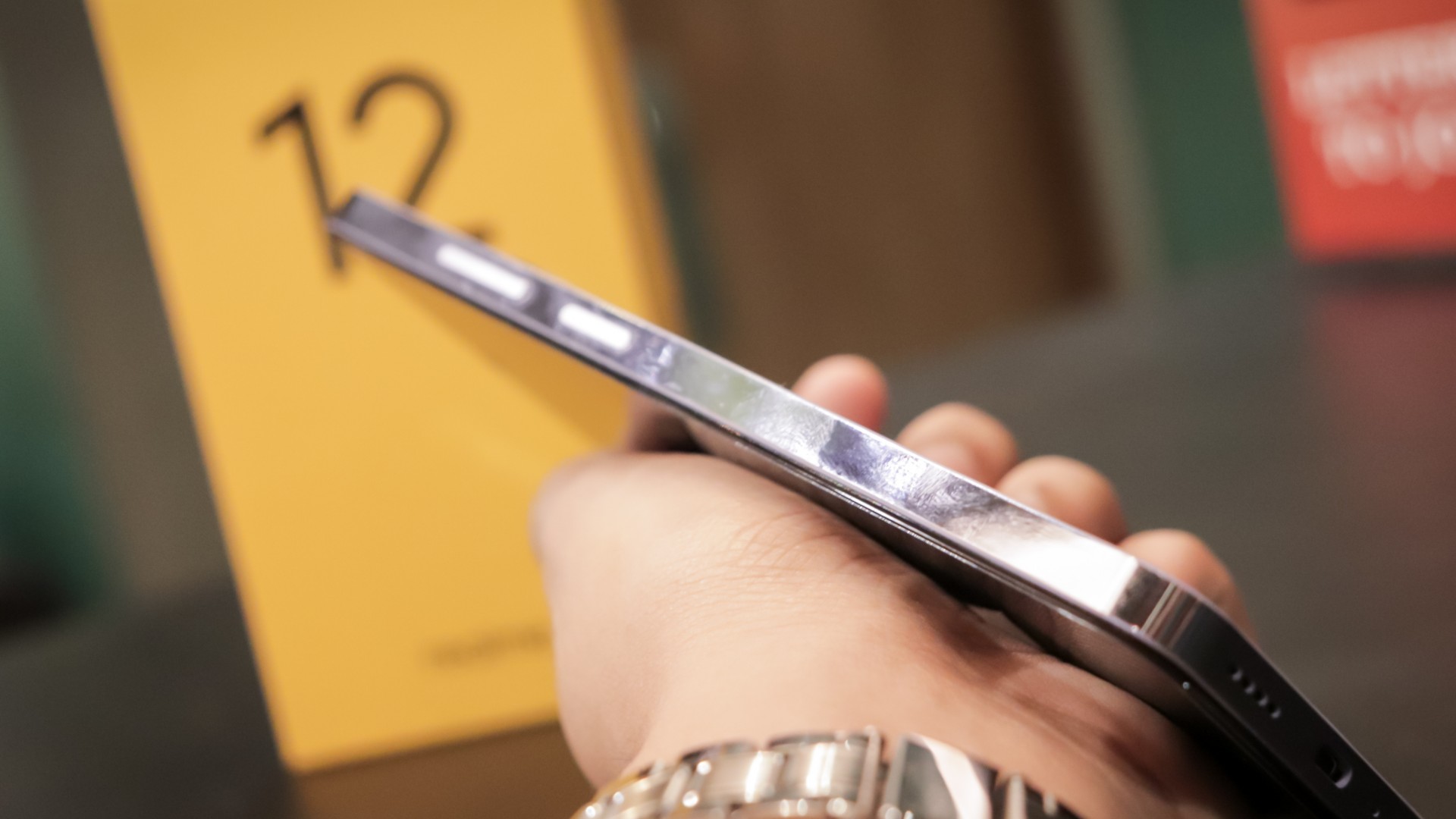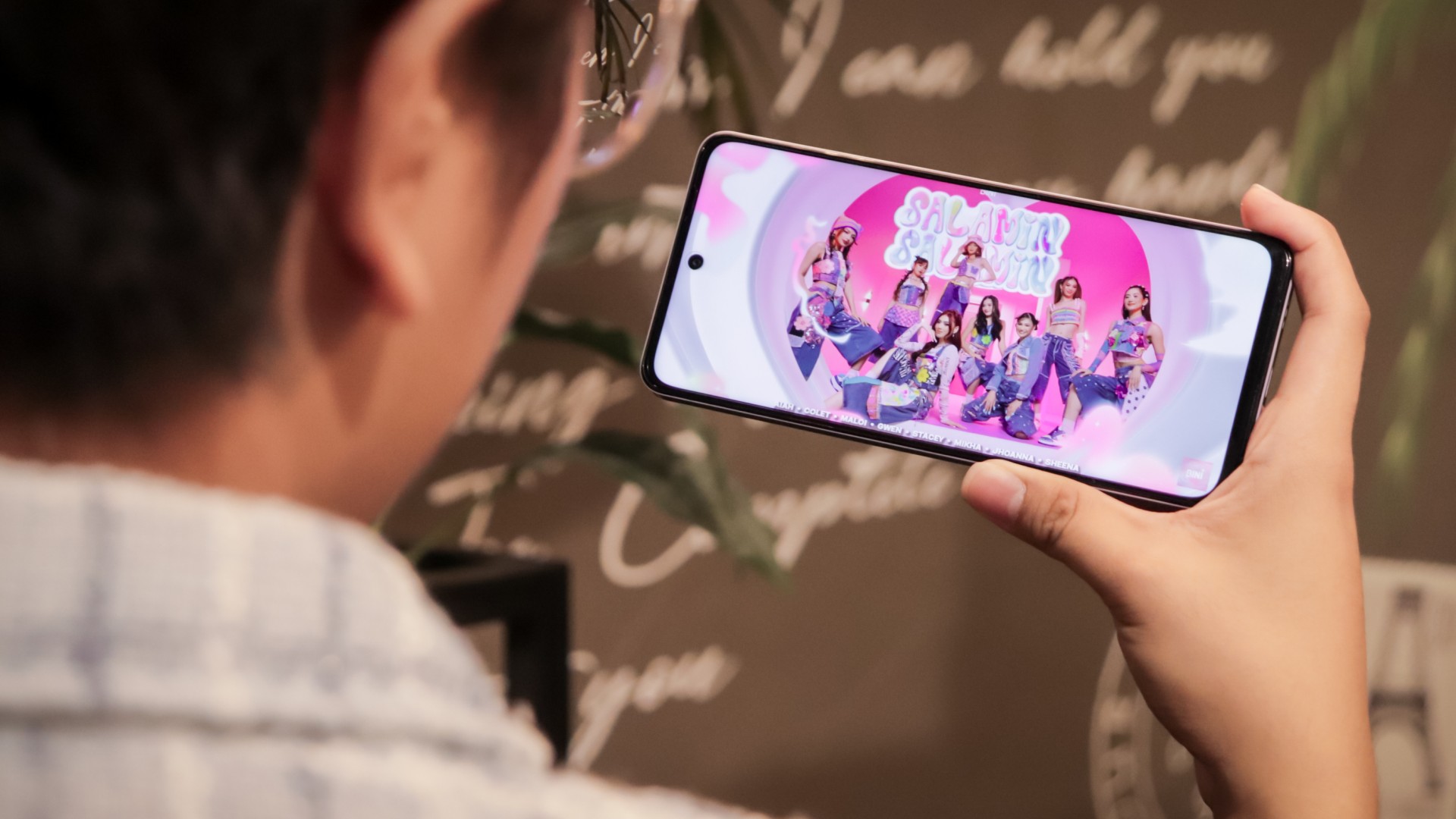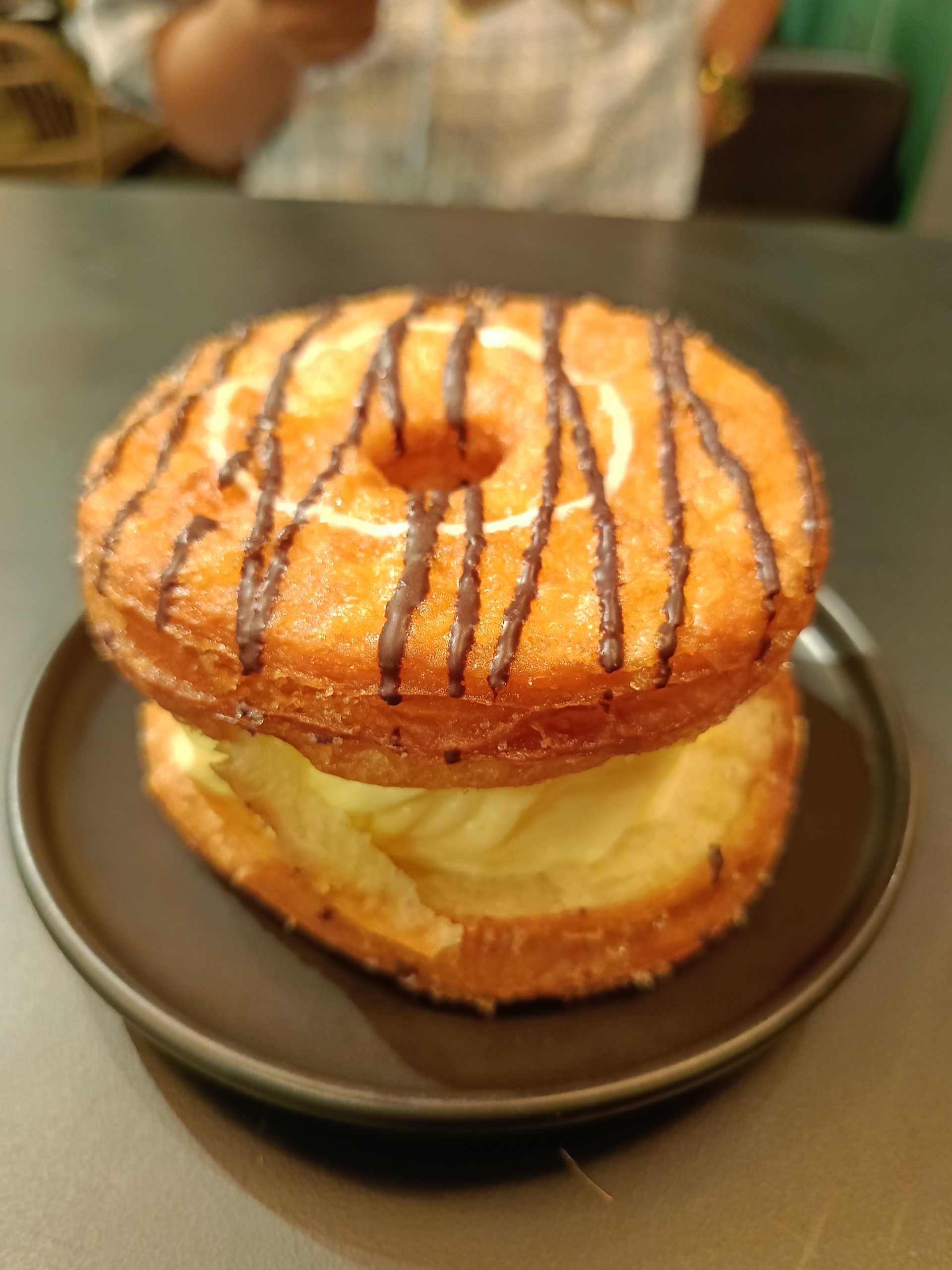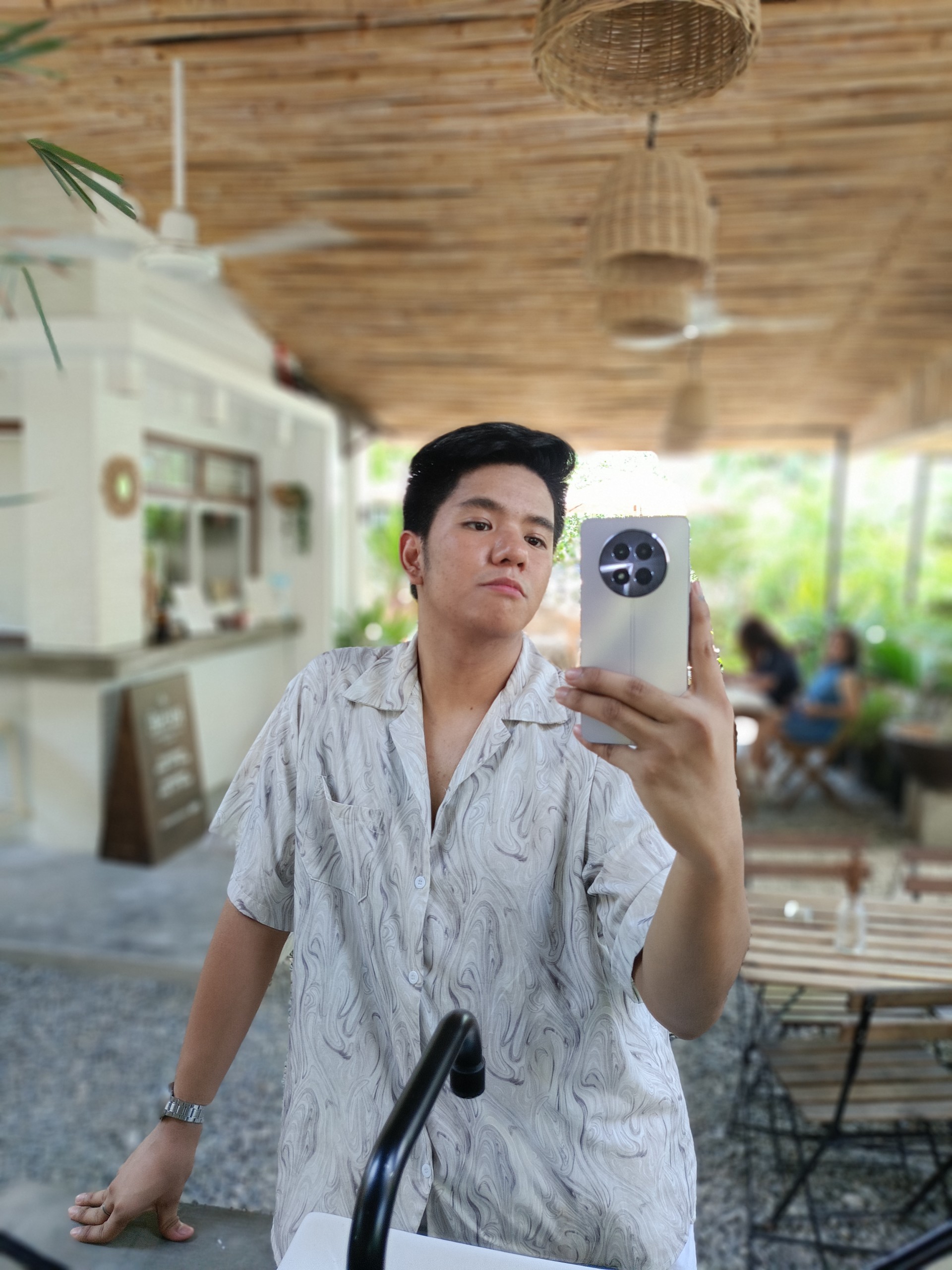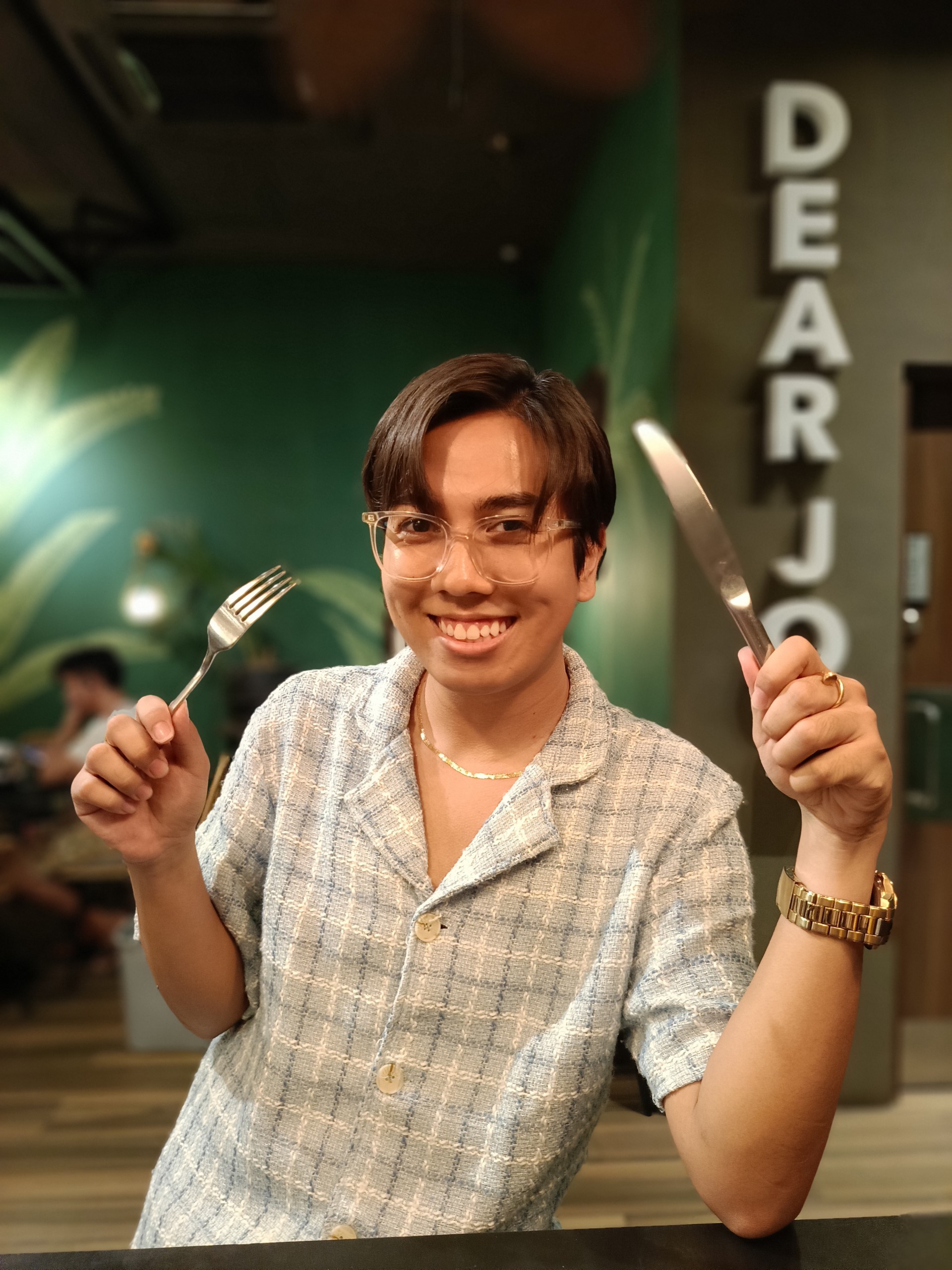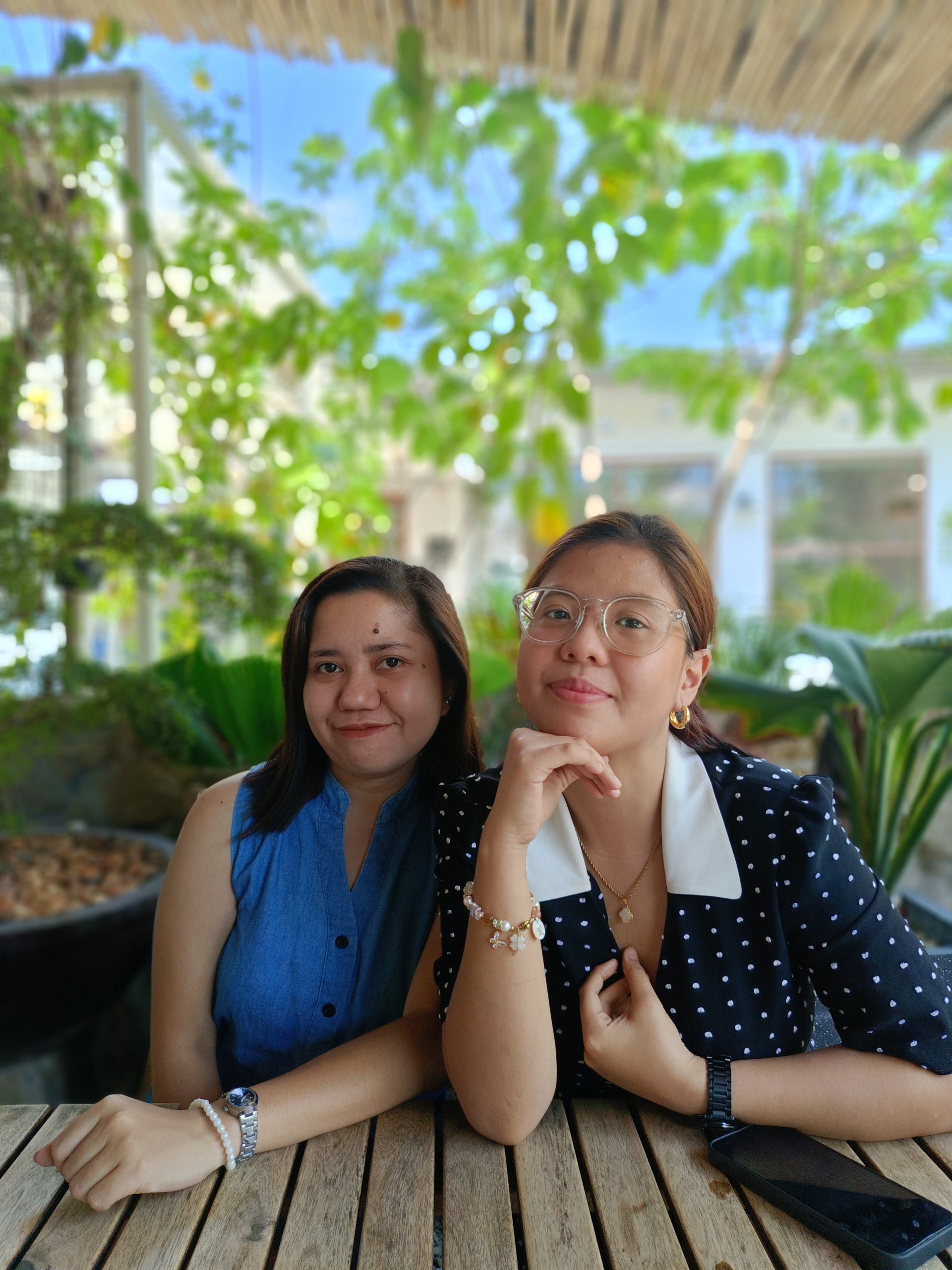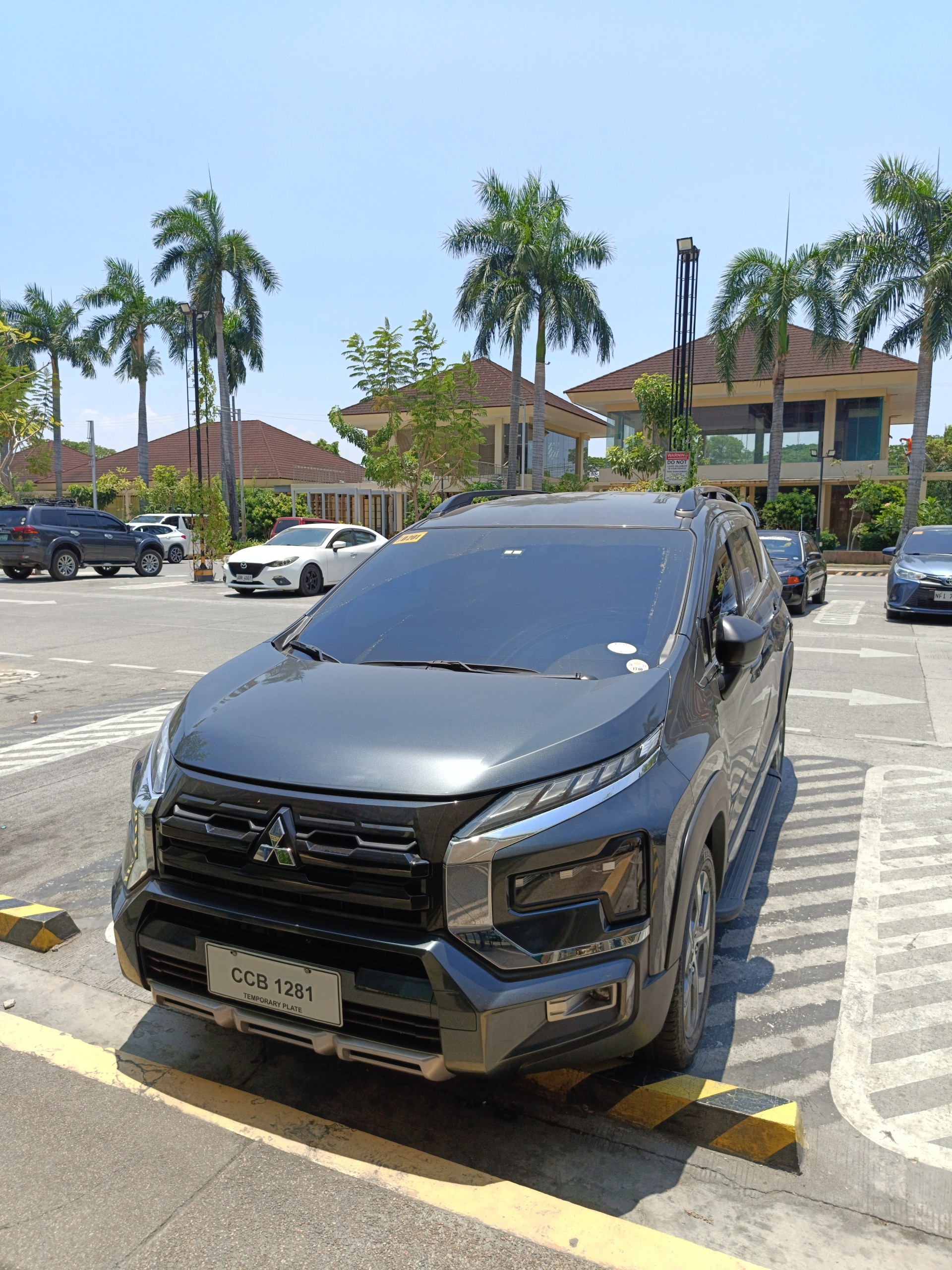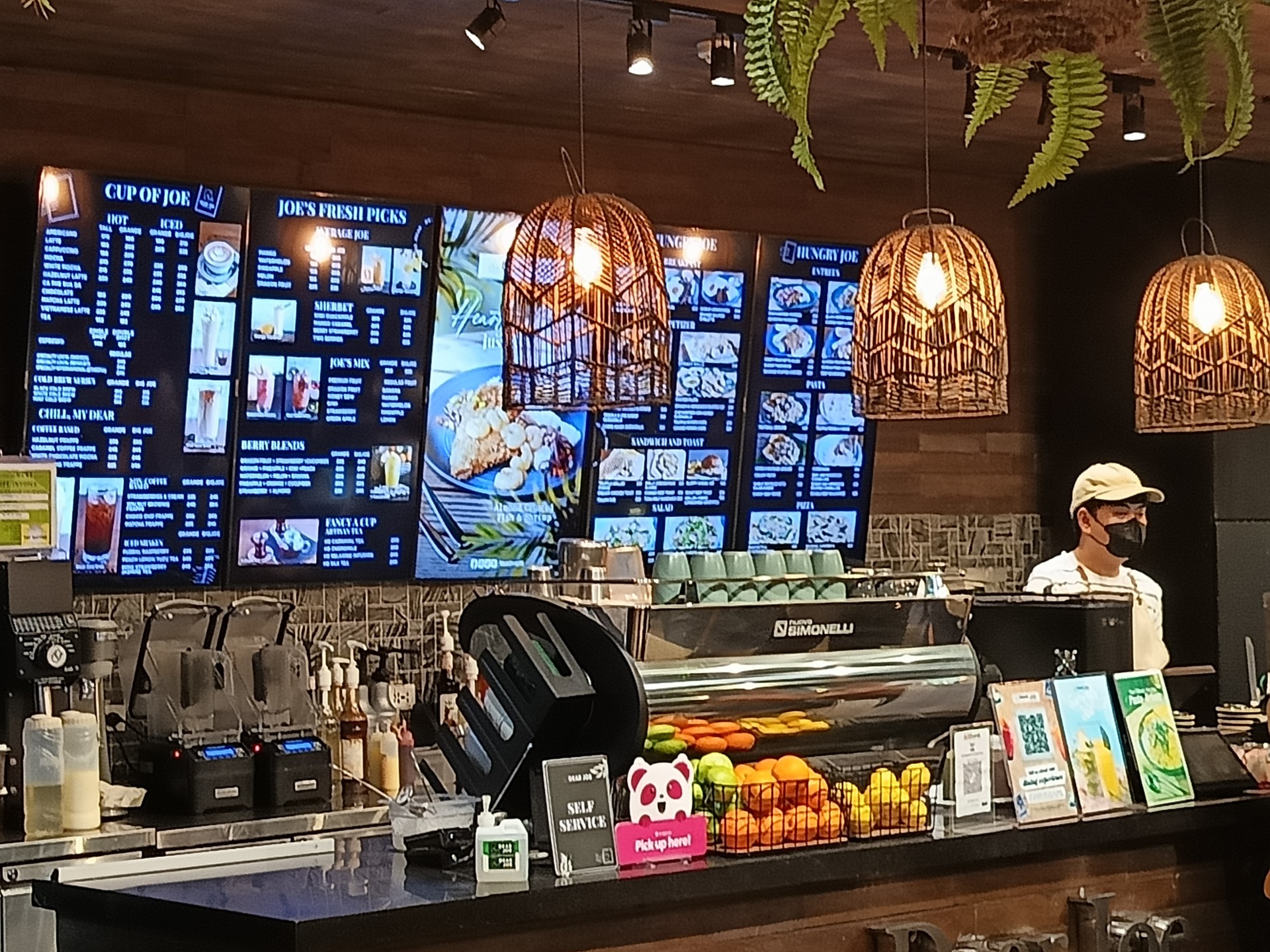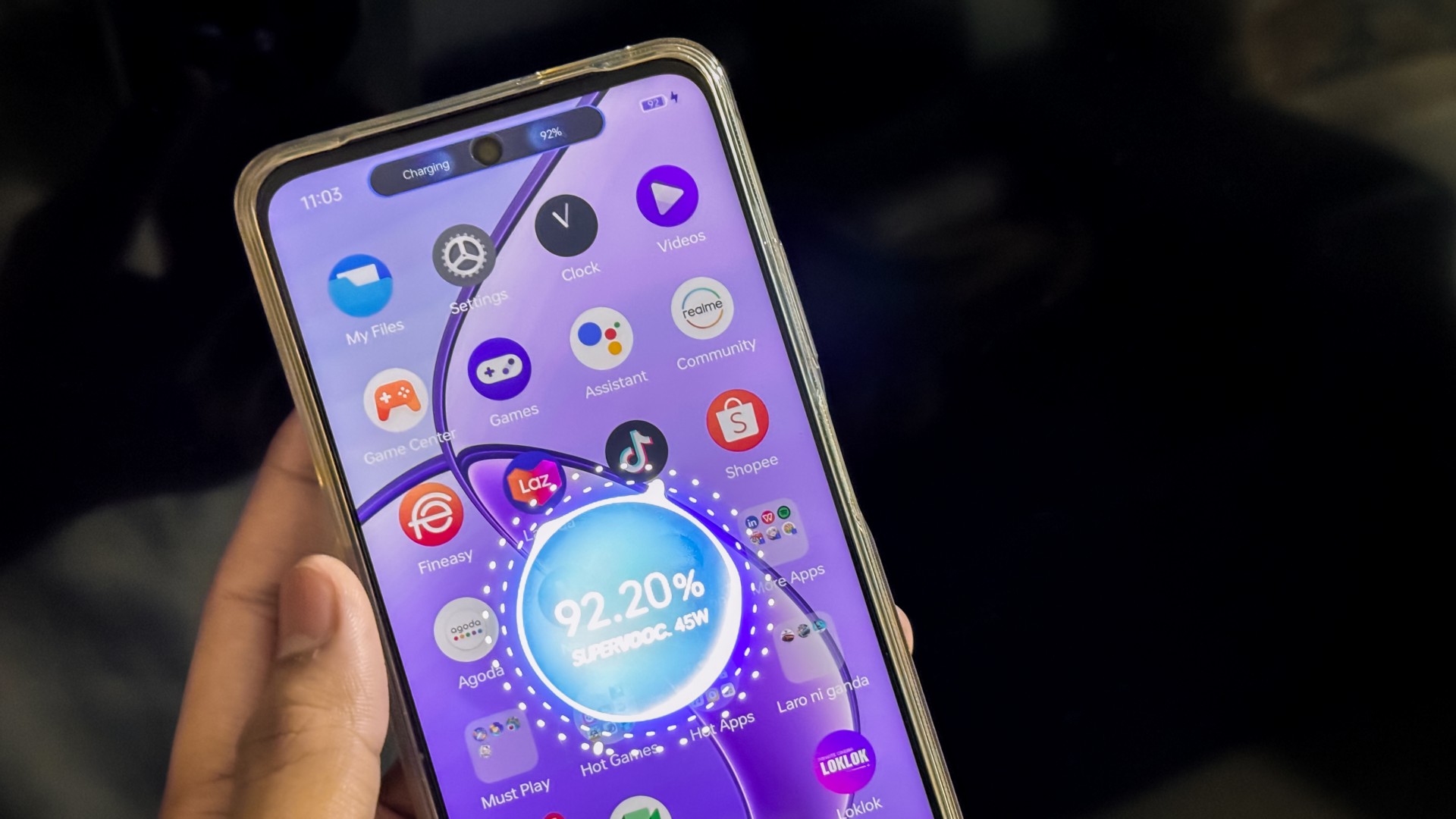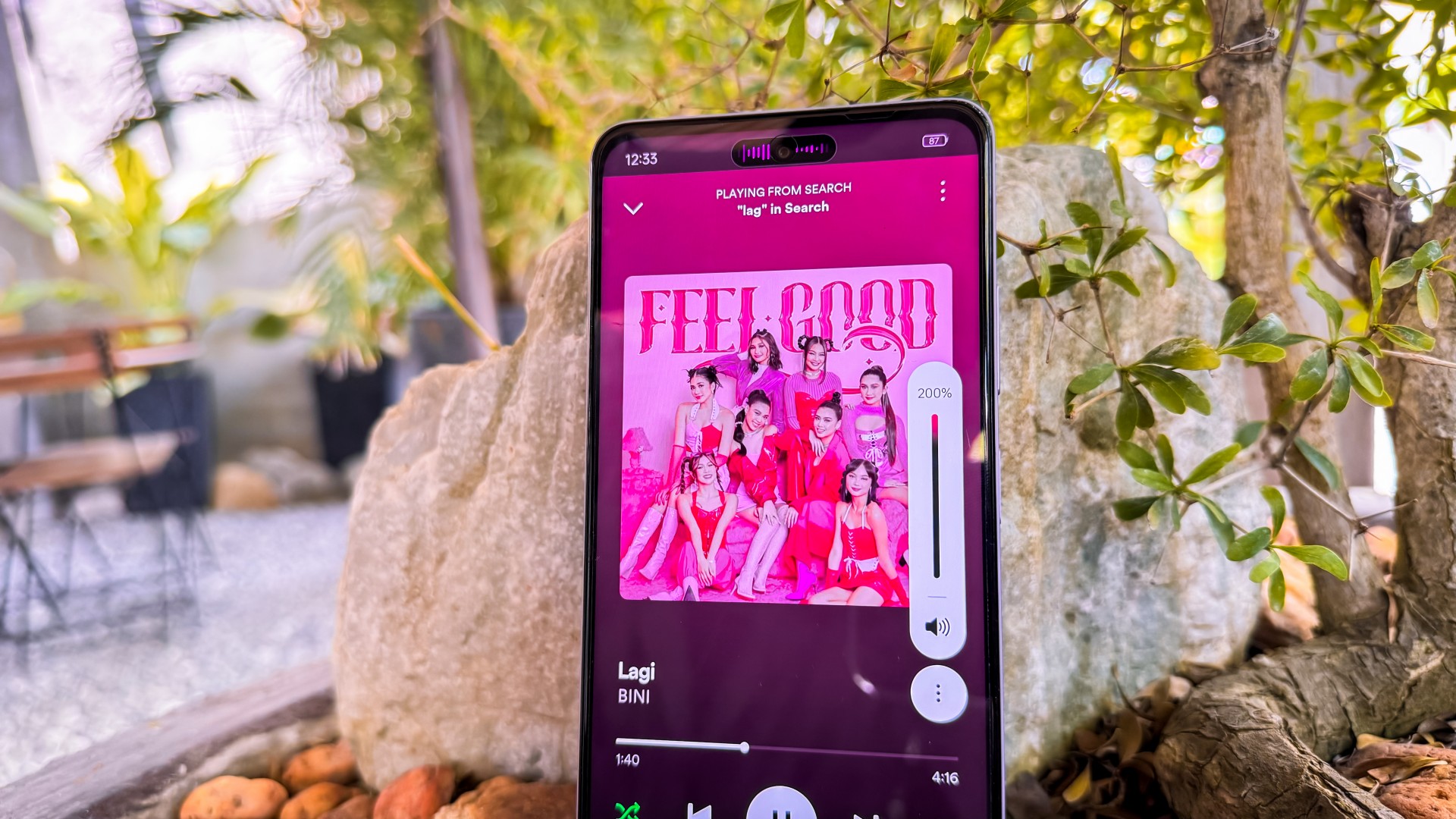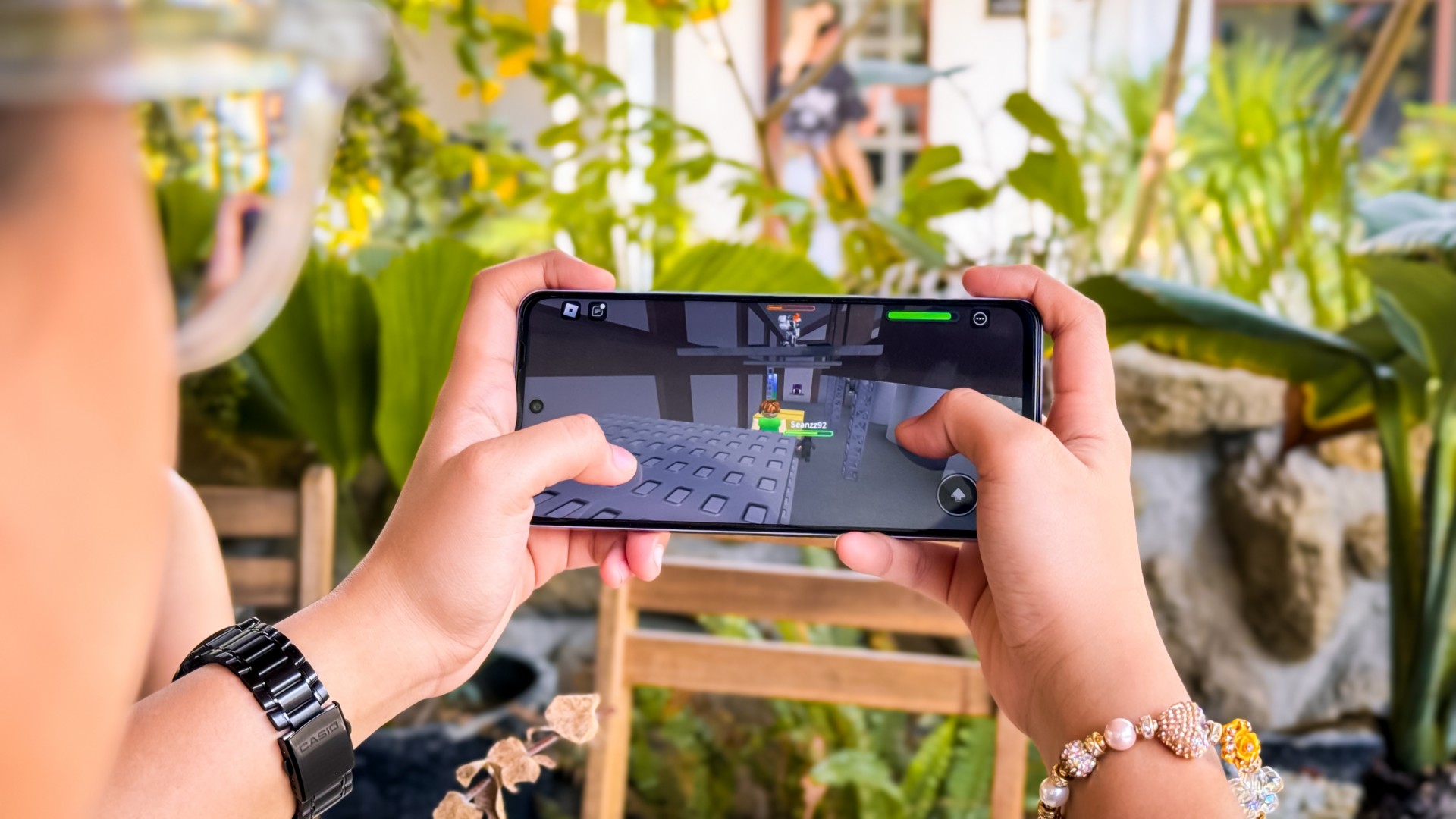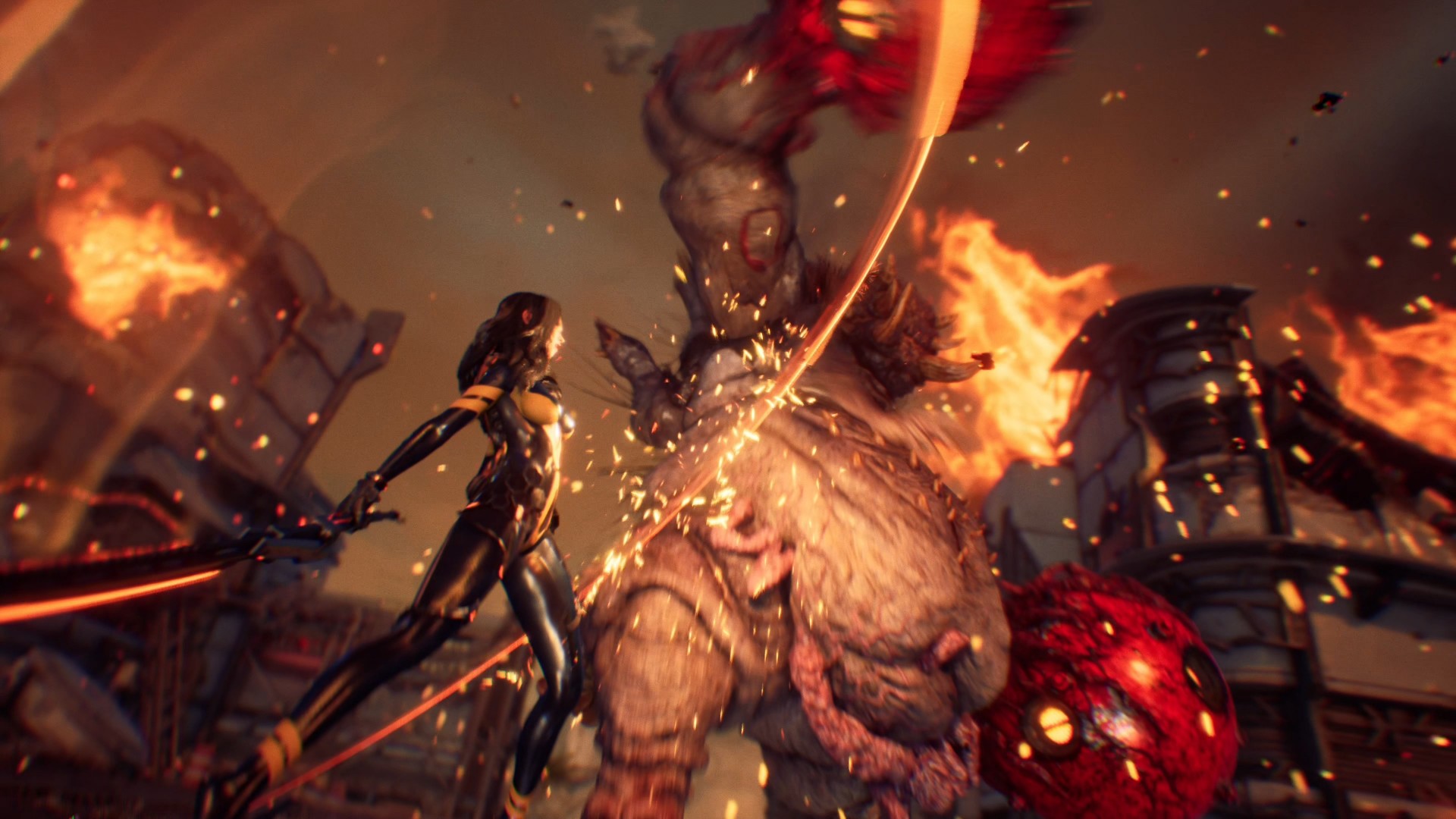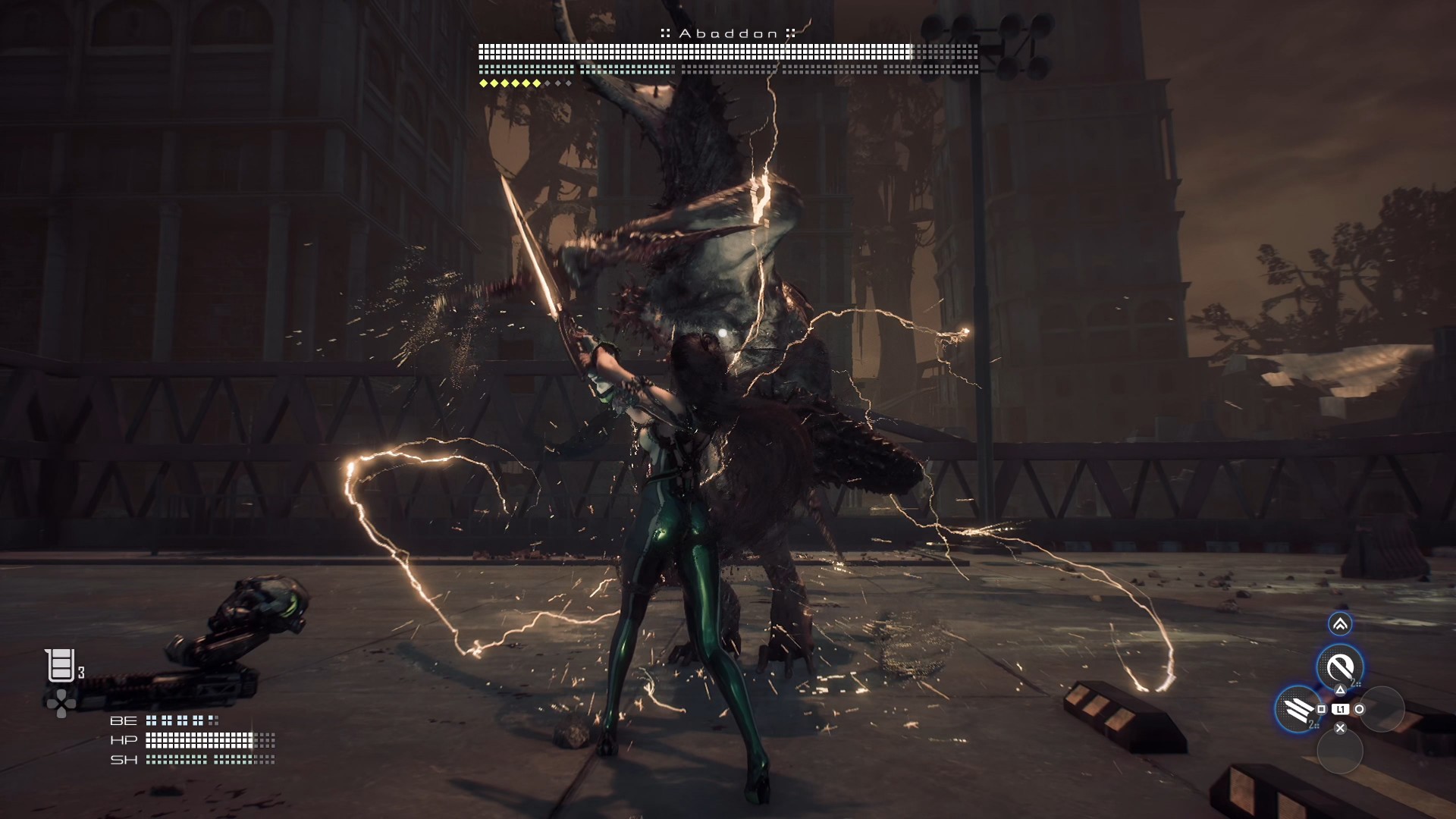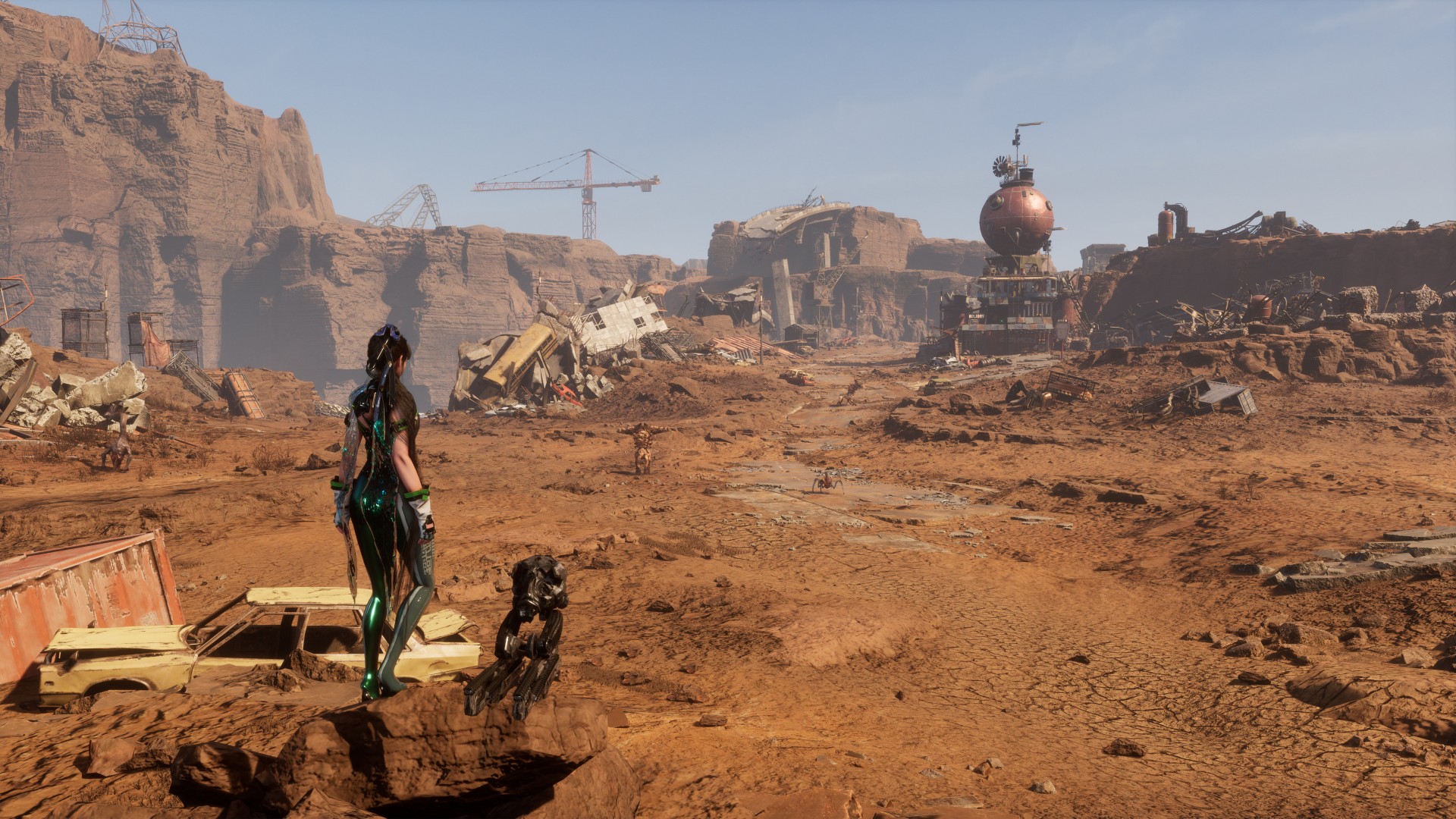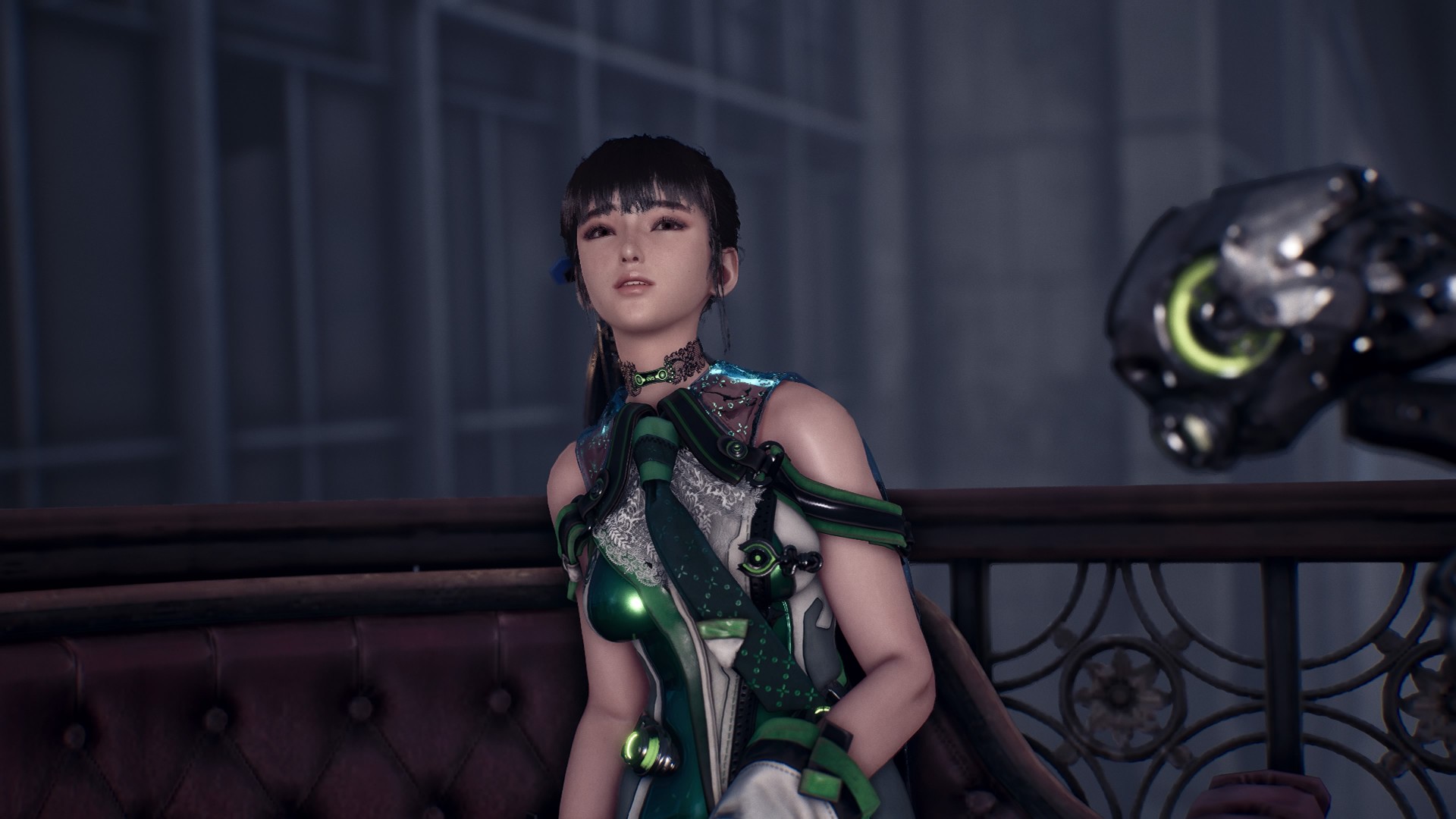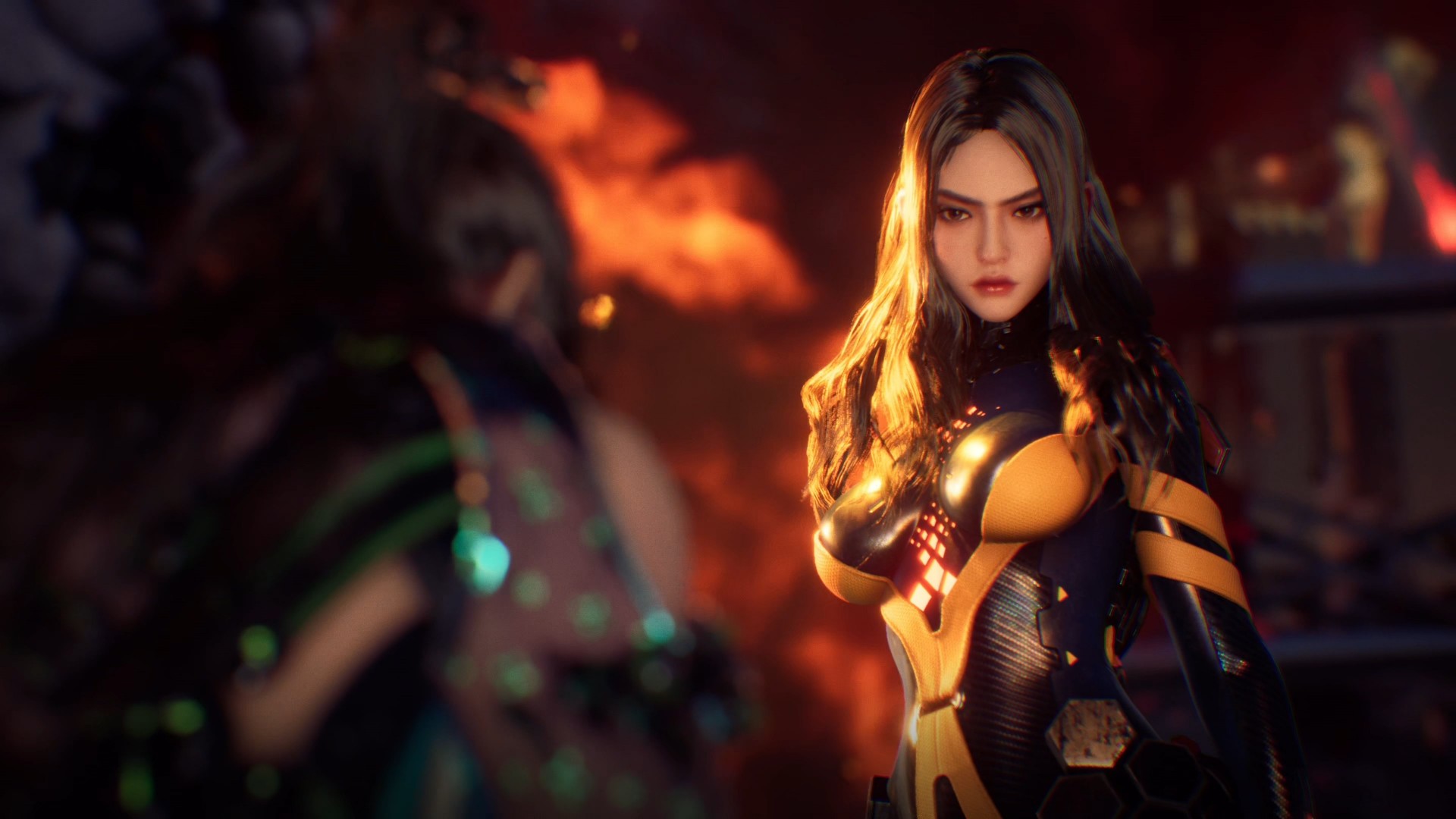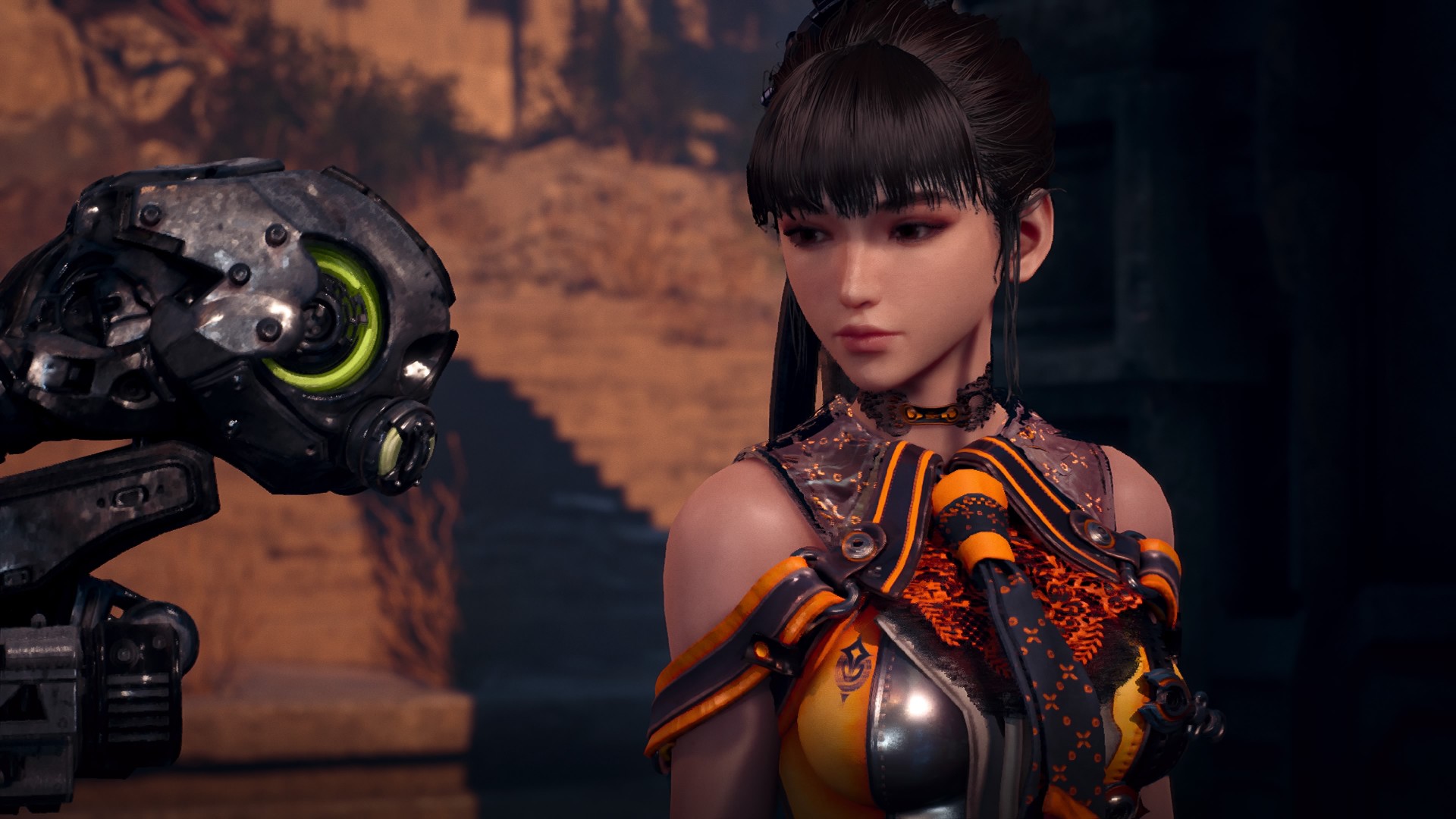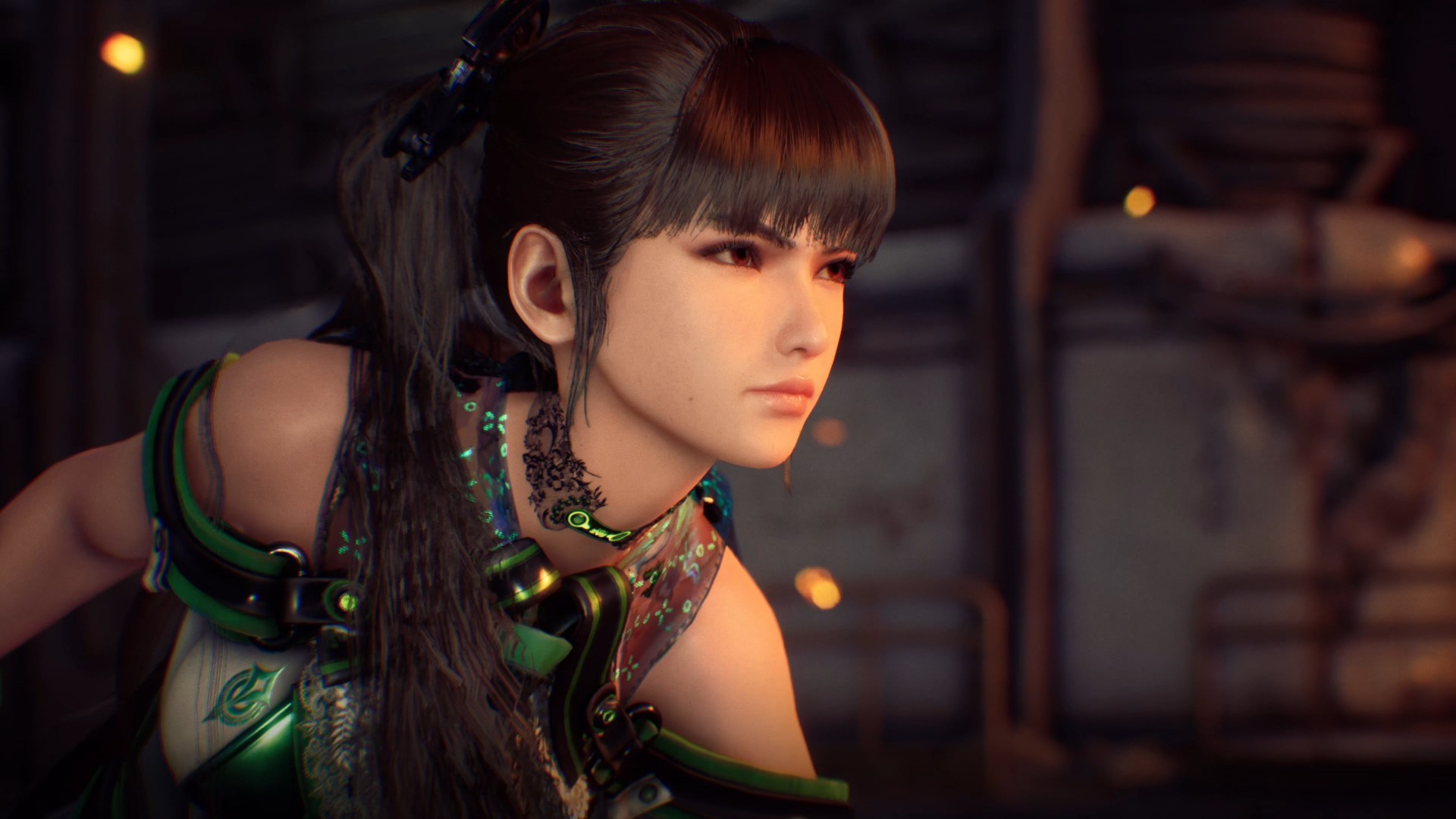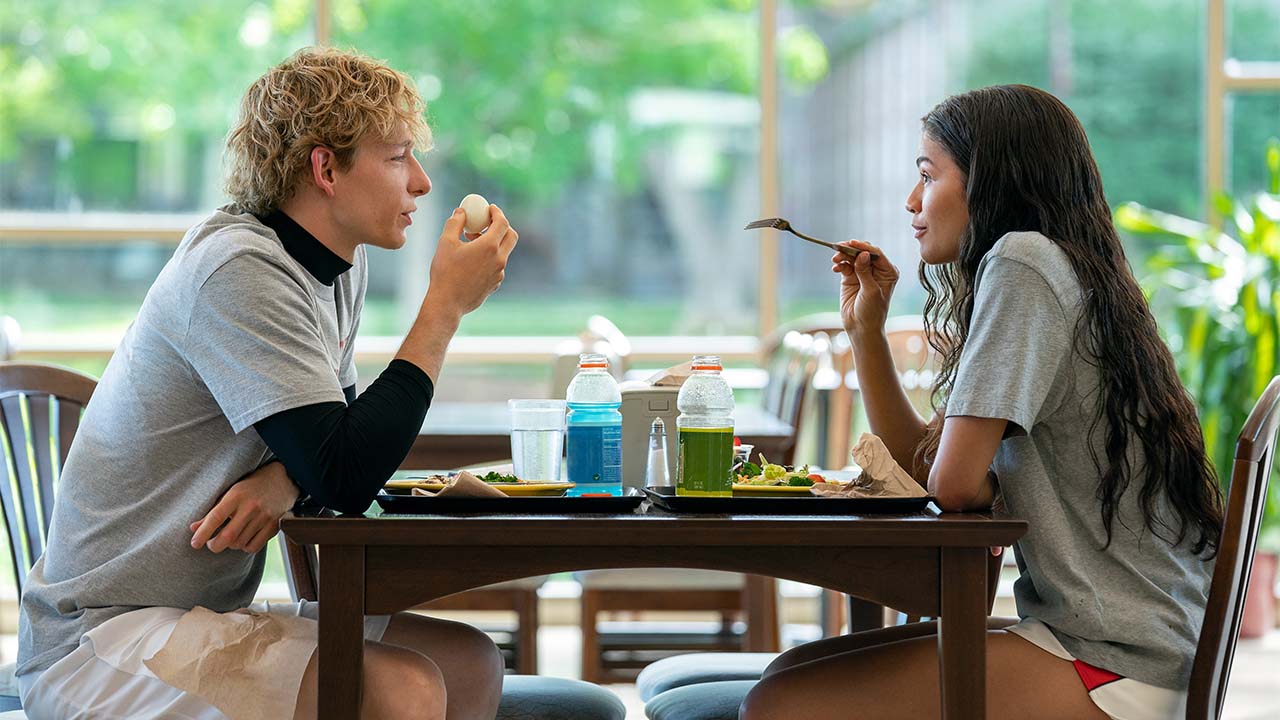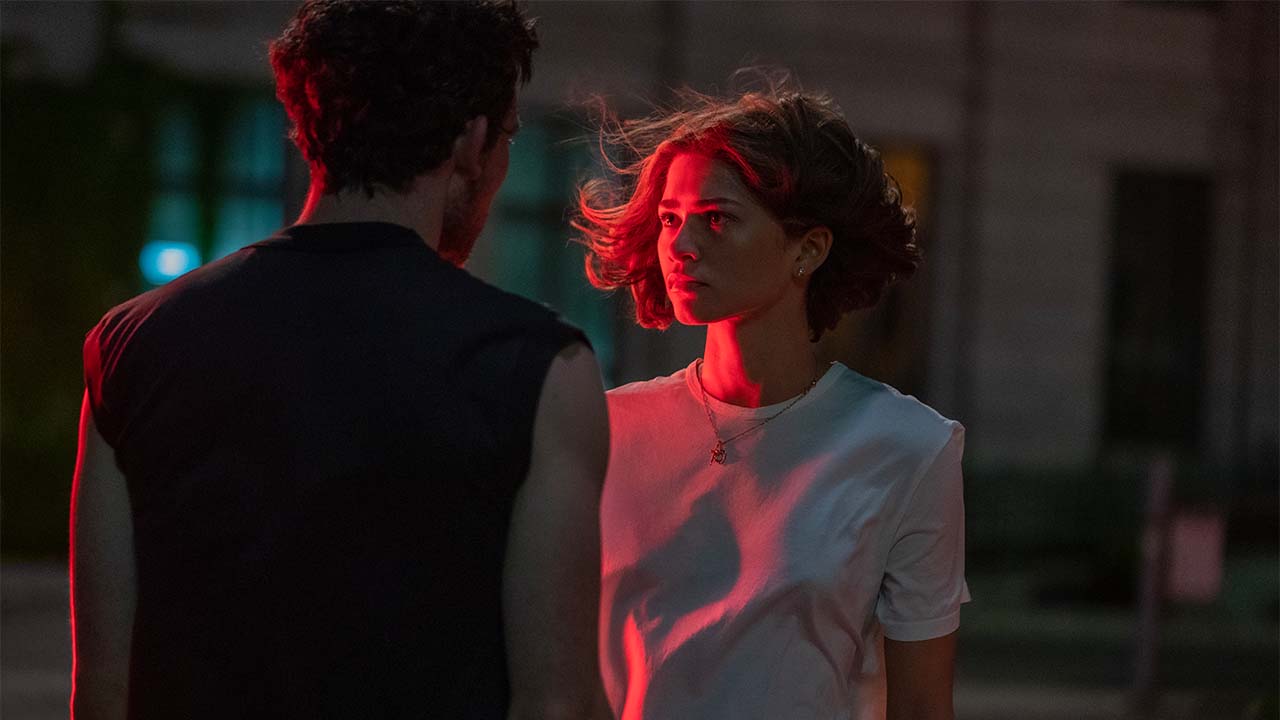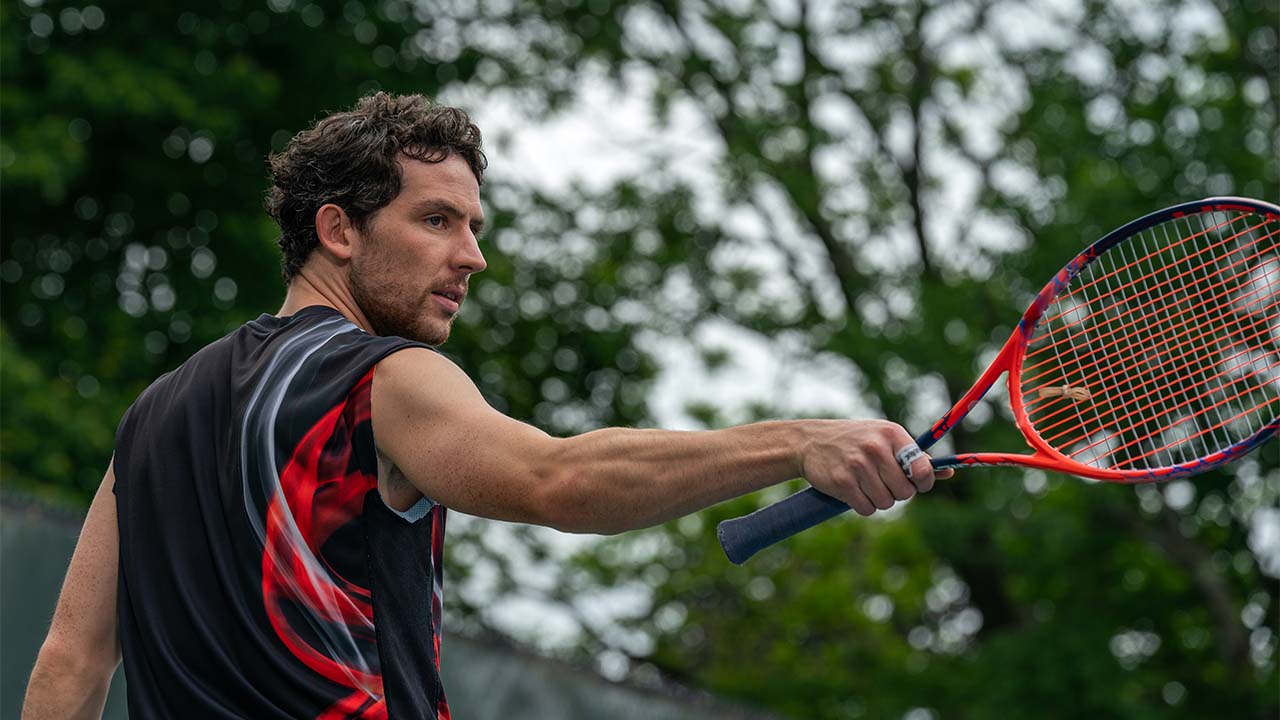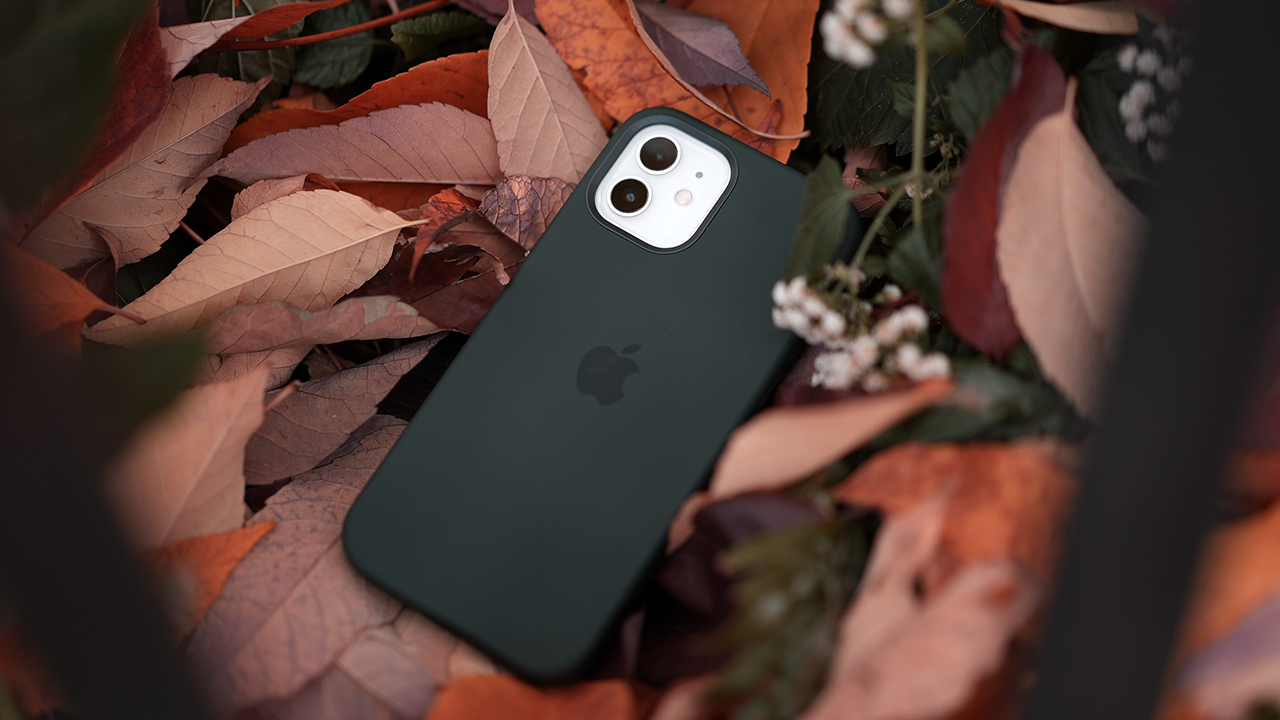
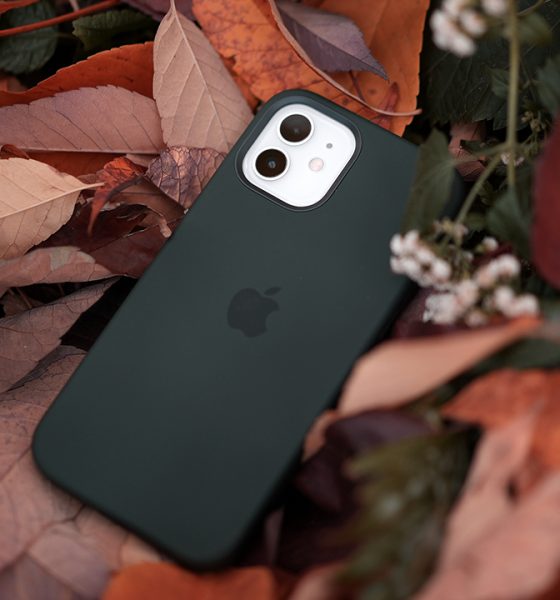
The story of the iPhone 12 can be summed up in three parts. First, the way Apple improved on it to the point where it’s closer to the Pro model than ever; second, how its new A14 Bionic chip and the addition of 5G offer more than what the average consumer needs; and third, the introduction of MagSafe and what this might mean about the iPhone’s future.
What’s in a name? Everything
In one brilliant marketing move not too long ago, Apple changed the way we look at phones. Back then, the iPhone XS and XS Max were all the rage — top of the line, the iPhones to get. Then there was the more affordable iPhone XR, which reviewers might call a premium midranger.
Apple flipped the switch by just changing their naming scheme. The iPhone XR became the iPhone 11 — the phone for everyone. The iPhone XS and XS Max became the 11 Pro and 11 Pro Max — the iPhones for prosumers, users with more “pro” needs.
This year, the iPhone 12 continues that legacy. It’s still the iPhone for most people. It’s even more more compelling this time around.
Fresh new design
Every few years Apple redesigns the iPhone to keep it looking fresh and trigger that gadget lust in all of us. 2020 is one of those years.
This year’s design isn’t completely new. It’s partly inspired by the flat edges that we first saw on the iPhone 5 and then later, the original iPhone SE. It’s one of the most beloved iPhone designs.
If you ask me, there was nothing wrong about last year’s design. In fact, I liked its rounded frame. It felt comfy when gripped. Still, the redesign is lit. As a fan of all things blue, the new blue color is to die for. It also comes in Product Red, mint green, black, and white.
Apple’s choice of materials and finish are the same. The iPhone 12 is wrapped in a matte aluminum frame and a glossy back, and the camera module contrasts nicely against its glossy glass back. It’s bright and eye catching, which means it’s most likely going to be covered up with a case. The only bit of color that peeks through is the camera module.
The high gloss finish picks up smudges. If you’re averse to that and plan to use your iPhone unprotected, white is the way to go.
Tougher than ever
Since we’re on the topic of protection, it’s worth pointing out that Apple uses something called Ceramic Shield as the top layer of the display. They’re not calling it glass but it is. It’s made with a composite of glass and ceramic. Apple claims this material gives the screen 4x more drop resistance.
Apart from that, the choice to keep the display flushed against the frame improves durability. Tests by insurance company AllState confirm these claims, and so does a YouTube video by EverythingApplePro.
Just remember Ceramic Shield is only on the front and not on the back of the phone.
I’ve seen a lot of incorrect assumptions on social media, so I think it needs to be stressed that Apple is not promising improved scratch resistance. Keys are still going leave your iPhone 12 with scuffs. If that bothers you, get a screen protector. If you can afford it, I recommend Apple Care. It’s US$ 9.99/month and that covers up two screen damage repairs per year at a minimal US$ 29 service fee.
Pro display
It’s important that the iPhone has a great display. since it’s the part of the phone that you look at the most. Unpopular opinion: Apple has been really good at delivering a solid experience regardless of what it says on its spec sheet.
Display was also one of the biggest differentiators between the non-Pro and Pro models. The iPhone 11 had an LCD Display with only a 720p resolution. The 11 Pro had an OLED panel, Full HD resolution, and support for High Dynamic Range.
This time around that gap just doesn’t exist. The iPhone12 and iPhone 12 Pro both have the same top of the line Super Retina XDR Display. It’s an excellent panel with rich colors, lots of punch and contrast and enough brightness even outdoors under the sun.
In keeping with its more flat design aesthetic, the display rests flush against the frame and doesn’t have those gentle curves as before.
If you look closely, the edges of the display have been pushed out further, too. This means that even if the display is 6.1 inches like the iPhone 11 and the iPhone XR, the iPhone 12 takes up a smaller footprint. Going by Apple’s numbers: It’s 15% smaller, 11% thinner, and 16% lighter.
If you’re coming from either of those two phones and like their size, there’s not much of a size difference to worry about. If you’re switching from an iPhone 8, X, or XS then you’re gonna get a slightly bigger phone.
The iPhone 12 mini, with all the same specs and features as the iPhone 12, is coming soon. That phone will be smaller than the 2020 iPhone SE, making it the smallest phone in Apple’s current lineup.
Top notch, literally
While the industry has tried its best to combat the notch and conceal the selfie camera, the iPhone has had the same big notch for four generations now. It’s there for a reason: to house the True Depth sensor that enables Face ID. Face ID is still the most secure face unlock system out there.
While a completely edge-to-edge display is nice to have, the notch does not bother me and Face ID remains my favorite way to unlock. That is, until the industry can figure out under display selfie cameras.
When the pandemic struck it got inconvenient. When the new iPad Air was announced to have Touch ID built into the home button, I hoped Apple would put the same feature onto the new iPhones. Pulling down my mask or typing in my passcode when I’m out to pay for something is not only inconvenient, it isn’t safe either.
Dual camera system
The iPhone 12 has two cameras. There’s a new 12 megapixel wide camera with a faster f/1.6 lens for better low light performance. The iPhone 11’s main camera had a slightly slower f/1.8 aperture. It retains the same 12 megapixel ultra-wide angle camera. Missing is a telephoto camera, which you will get from the Pro model.
Aside from hardware improvements, Apple improved what it cheekily refers to as computational photography mad science. This tech is responsible for features like Deep Fusion, Smart HDR 3 and Night Mode, which are not available on all cameras.
Here are some sample photos we took with the iPhone 12.
The weather in New York has been mostly rainy so these first few shots are from a cloudy day in Brooklyn.
The faster main lens means the iPhone 12 can take photos with a shallower depth of field. Photos also turn out brighter in low light. As you can see in this shot of Chay’s affogato sundae, the second scoop of ice cream is already out of focus. Chay loves ice cream so much so you get a night time shot of her Pistachio gelato, too. This was taken without night mode. See all those balls of bokeh.
The iPhone 12 doesn’t have night mode for portrait mode. That feature can be found on the iPhone 12 Pro and Pro Max. The shallower lens lets in more light, so portrait mode does a really good job in low light nonetheless. The iPhone 12 is supposedly better at depth segmentation. It should be better at cutting out things like glasses or strands of Chay’s hair. In our tests, the results came out not perfect, but they were not bad either. In photography school, they tell you never to take photos against the light. With Smart HDR 3 on the iPhone 12, go right ahead! Notice all the details on Chay’s face despite the challenging shooting scenario.
I also tested Night Mode across all cameras. Here are examples using the main wide angle lens, the ultra-wide angle camera, and the selfie camera.
Hardware-wise the the ultra-wide angle camera is unchanged. It’s still sufficiently wide for dramatic shots like this.
Thanks to Night Mode, it’s now usable in low light. Resulting photos are softer versus those taken with the main camera.
The iPhone has a long history of being one of the best smartphones for videography and the iPhone 12 is no exception. Watch this montage of a cloudy, gloomy New York City shot on the iPhone 12:
A14 Bionic
The iPhone 12 is powered by Apple’s new A14 Bionic Chip. This is the world’s first 5 nanometer processor. According to benchmarks it blows its competition out of the water.
I’m not that big of a benchmark guy, but in the week that I used the iPhone 12 it took everything I threw at it. Graphics intensive games like Asphalt 9 and console style Apple Arcade titles like Way of the Turtle ran well. Shooting and editing videos using the new Dolby Vision format were not a problem either.
The phone can do everything else that we do on the daily easily — catching up on social media, messaging, and browsing GadgetMatch.com because it’s my daily habit.
To put it simply, A14 Bionic is probably overkill for what you do on your phone everyday. This also means that the iPhone 12 will be able to meet your performance needs 3-5 years down the line, if you plan on holding on to it that long.
Battery life and charging
If there’s one touchy subject concerning the iPhone 12, it’s got to be battery and charging. Some folks are not too pleased that Apple no longer includes a power adapter in the box.
I respect Apple’s decision to prioritize the environment. It’s a tough, inconvenient one to make, and I respect that Apple is leading the charge.
While people like me might have plenty of USB-C power adapters lying around, not everyone does. It would have been nice if Apple offered store credit so those new to the world of USB-C can get one for free. It’s worth pointing out that Apple slashed the price of its USB-C power adapters from US$ 29 to US$ 19 following the iPhone 12’s launch. Price of Lightning EarPods, which are not included in the box, was also reduced from US$ 29 to US$ 19.
Another touchy subject: The iPhone 12 has a smaller battery than the iPhone 11 according to teardowns. This shouldn’t be that big of an issue considering how much more power efficient A14 Bionic is. However, the iPhone 12 also supports 5G networks. This alone drains the battery faster.
In my tests my iPhone 12 lasted longer when I switched to LTE. I got 6-8 hours of screen-on time on LTE, while 5G Auto gave me only 4-5 hours. The latter is a smart mode that switches between LTE and 5G based on what tasks you’re doing.
The iPhone 12 supports fast charging with Apple’s optional 20W USB-C charger. You can also use faster ones like those that come bundled with Macs, or other third party chargers. By fast charging I don’t mean the crazy speeds you get from OnePlus’ Warp Charge. That tech can get you from 0 to 100% in less than an hour.
Using Apple’s 20W charger, the iPhone 12 got to 20% in 10 minutes, 47% in 30 minutes, and 80% in an hour. A full charge took close to two hours.
MagSafe today, zero ports tomorrow
Perhaps, the big news this year is the optional accessory called MagSafe, which appears to be Apple setting the stage for a port-less future. For now, it’s being marketed as a smarter way to wirelessly charge.
By placing a sheet of magnet paper on top of the iPhone 12, you’ll see where the magnets are. These allow the phone to attach to this MagSafe charging puck. This is an optional US$ 40 purchase from Apple. The charger only attaches one way — where the outline of the circle is. It also lights up and makes a sound.
If you own a wireless charging mat, you’ve probably woken up to find that your phone didn’t charge overnight because you improperly laid it down. MagSafe solves this problem.
As it is today, it’s not fast charger by any means. It only supports up to 15W wireless charging. In my tests I got to 10% in 10 minutes and 57% in an hour. A full charge took about 2 hours and 45 minutes. It’s definitely more of an overnight charger and not one you should rely on for quick top ups.
Apple also sells a range of accessories that support MagSafe. There are new silicone cases and a magnetic wallet that all snap together and make different colored animations.
Do you need 5G?
With every smartphone manufacturer launching a 5G phone this year, it comes as no surprise that it’s also the iPhone’s headline feature. From its product page on Apple.com to the amount of time spent talking about it during the launch event — it’s everywhere.
Let me preface by saying this: Don’t buy the iPhone 12 just for 5G. Depending on where you live in the world 5G might not even have rolled out at all. In the US, carriers like Verizon and T-Mobile are aggressively advertising and rolling out nationwide. You see it everywhere in a big city like New York, but I know this isn’t the case for everyone.
This chicklet shape on the side of the iPhone 12 is unique to US models. It’s actually a window for the mmWave antenna – a different kind of 5G that’s only currently supported by Verizon. It should give you faster speeds but it’s not as reliable right now.
I tracked down a few Verizon Ultra Wideband spots around Manhattan and Brooklyn but I could not get anything more than 200 Mbps. I even went to a tried and tested corner of Bryant Park where I used to get speeds of 1700 Mbps. T-Mobile’s sub-6 network was giving me faster speeds.
Not that 200 or 300 Mbps down isn’t fast enough. I tried to download an entire Troy Sivan album and it completed in mere seconds. With 5G you can now make HD FaceTime calls over cellular. That’s better quality video calls than was previously possible.
All of this said, 5G is here. There are growing pains, but it’s good to know that when you get the iPhone 12, you’re getting a device that supports it.
WATCH: Will 5G change our lives?
Is the iPhone 12 your GadgetMatch?
This time last year, I used the iPhone 11 for a good two months. I wanted to know if a pro user like me could survive on the non-pro model? TL;DR I didn’t mind at all. This year Apple brought the gap between the 12 and 12 Pro even closer.
Upgrades from the iPhone 11 are also significant enough: a Super Retina XDR display, improved photo and video performance, 5G support, and an eye-catching redesign.
You might not need all of this today. All these improvements, however, guarantees that your iPhone can keep up five years down the road. That’s the same amount of time that Apple guarantees iOS updates.
It’s worth noting that these improvements come with a US$ 100 price increase from last year. The iPhone 12 starts at US$ 799 for the 64GB model. If recommend spending US$ 50 more to get the 128GB model.
Unless you need more storage, more RAM, and a telephoto camera, I recommend saving your money and getting the iPhone 12 over the iPhone 12 Pro.
I wholeheartedly believe that the iPhone 12 is the one most iPhone users should consider. If you have an iPhone that’s two years or older and are considering an upgrade, now is a good time to do so.
The iPhone 12 is an excellent phone, reasonably priced, and backed up by a rich ecosystem of apps, services, and other devices that are designed to work together seamlessly.
There is nothing quite like it.

Reviews
realme 12 5G review: It was enchanting to meet you
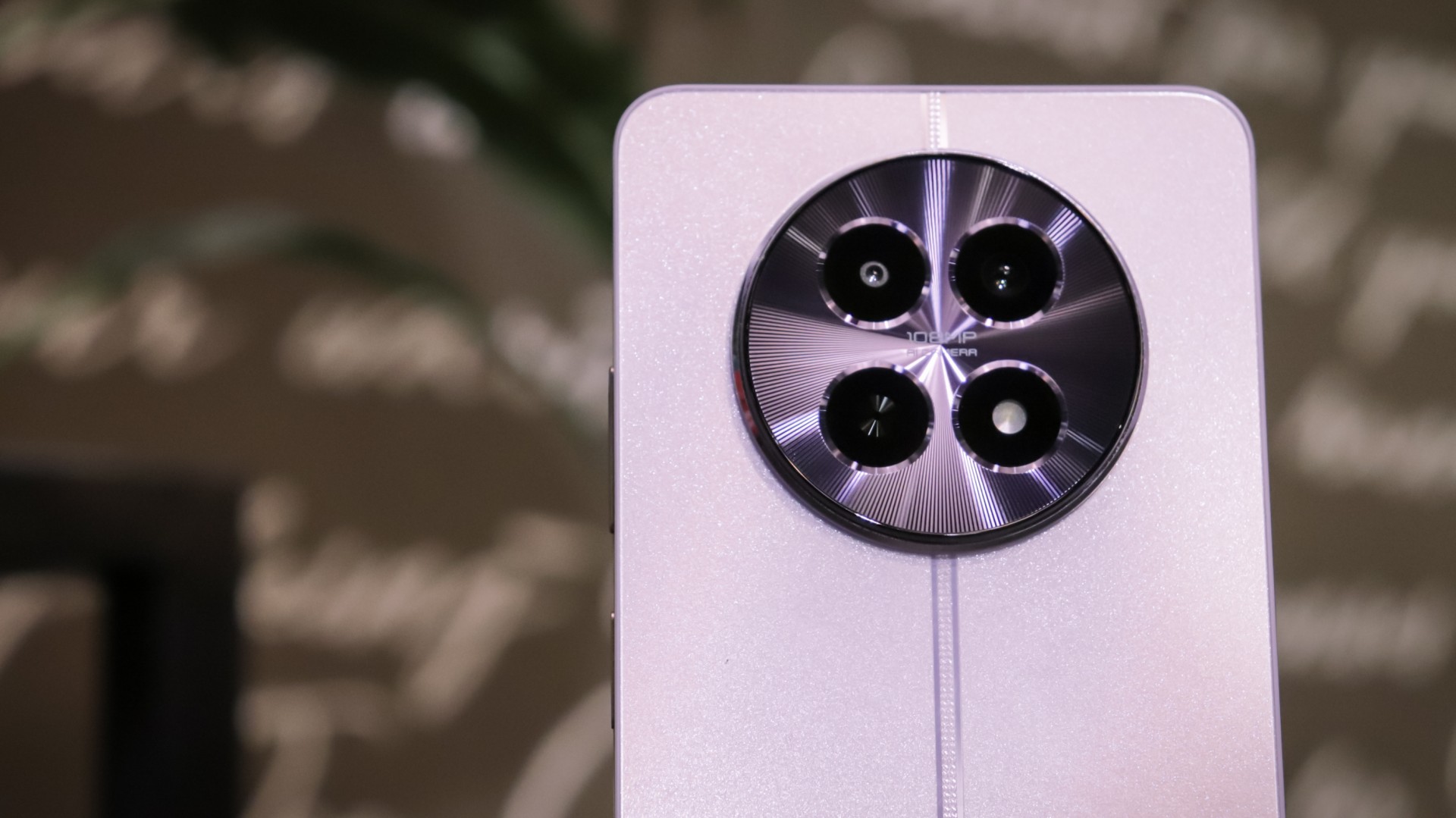
Just when we thought the Midnights’ era was over and the clock’s hands are now pointing to the tortured poets, a ‘Lavender Haze’ has arrived in the midrange smartphone department of the Philippines.
The realme 12 5G is here, and dang, does it look magical!
Just over a month after the official release of the realme 12 series, a new younger sibling just arrived, dead set on satisfying a niche that wants a competitive mobile device but has arguably smaller pockets.
You showed me colors you know I can’t see in anyone else
Right off the bat, the realme 12 5G is nothing short of stunning. The unit I have is in Twilight Purple, and believe me when I say that it’s a feast for the eyes. The other color variant of the phone is Woodland Green and its deep green hues will certainly win many hearts as well.
Despite not having the vegan leather of its older siblings, the realme 12 5G still has the ability to turn heads and serve the borahae aesthetic which a lot of people (count me in!) like.
The camera layout of the realme 12 5G is a visual language we’re familiar with all too well. The luxury watch design is something I will always be a fan of. I really admire smartphone brands that create their own visual identity rather than those who take the easy route of copying a certain bitten fruit brand.
However, I must say that the metal frame of the realme 12 5G is a certified fingerprint magnet. But if you’re like part of the, say, 99% of the population who use smartphone cases, the free clear case that comes straight out of the box is an easy fix. That’s another episode of android-smartphones’-generosity-saves-the-day!
It is also an important thing to note that while I really love the big camera design of the realme 12 5G, it can be bothersome when using the phone in landscape orientation. My fingers are naturally covering/touching the cameras. While it’s not that uncomfortable, you might have to wipe the lenses much more than you think you should.
The ports and buttons are pretty generic for the most part. The volume controls and power buttons are sitting on the right, the USB-C port, stereo speakers, and the 3.5mm headphone jack (yes, a headphone jack in 2024? I know, right!) are on the bottom. realme, however, stepped up the game through the power button because it does not only double as a fingerprint scanner, it also allows custom shortcuts by double-tapping or double-pressing. This feature is called the dynamic button.
A display made for ‘Islang Pantropiko’ (Tropical Island)
Rocking a 6.72 FHD+ LTPS LCD display that supports a screen refresh rate of up to 120Hz is another impressive feature the realme 12 5G boasts under its purple sleeves. With a screen-to-body ratio of 91.4% and a camera punch hole that effortlessly blends with the display, an immersive experience is guaranteed.
The image looks sharp, the colors are vivid, and scrolling on this device is a breeze. Although, I would have loved it more if the bezels are thinner or at least, proportionally distributed but again, that’s just me being a true-blooded Virgo.
But that’s not where the display admiration ends. The realme 12 5G also supports up to 800 nits of screen brightness. It can go further to 950 nits when the ‘Extra Brightness’ mode found on the display settings is toggled on.
This makes the display easily viewable even outdoors. That’s especially true during these ‘Islang Pantropiko’ summer weather when the sun’s scorching heat is not that forgiving to smartphones with dim displays.
The cameras: Do I love it? Do I hate it? I guess it’s up and down!
I would like to be very honest, I initially wanted to name this portion of the review as “The tortured camera department” but I feel like that would not be accurate of what I really feel towards the shooters of the realme 12 5G.
The smartphone sports three cameras in total. At the back lies the 108MP main camera that supports 3X zoom and a 2MP portrait camera. Meanwhile, the 8MP AI selfie camera resides on the front panel.
The quality of the photos produced by the realme 12 5G is a hit or miss for me. There are times when I really feel like it’s doing a great job but there are also times when I just feel like it could have done so much better. Take a look at these sample photos.
Photos taken in broad daylight look pretty good. The colors are vivid and the sharpness is on point. The only thing I can complain about is the dynamic range which, on some conditions, can look underwhelming or too processed for my liking.
Despite the not so accurate edge detection, portrait shots of the realme 12 5G can produce decent outputs. However, I highly suggest using the 1X option rather than the 3X one for a natural looking and overall better quality.
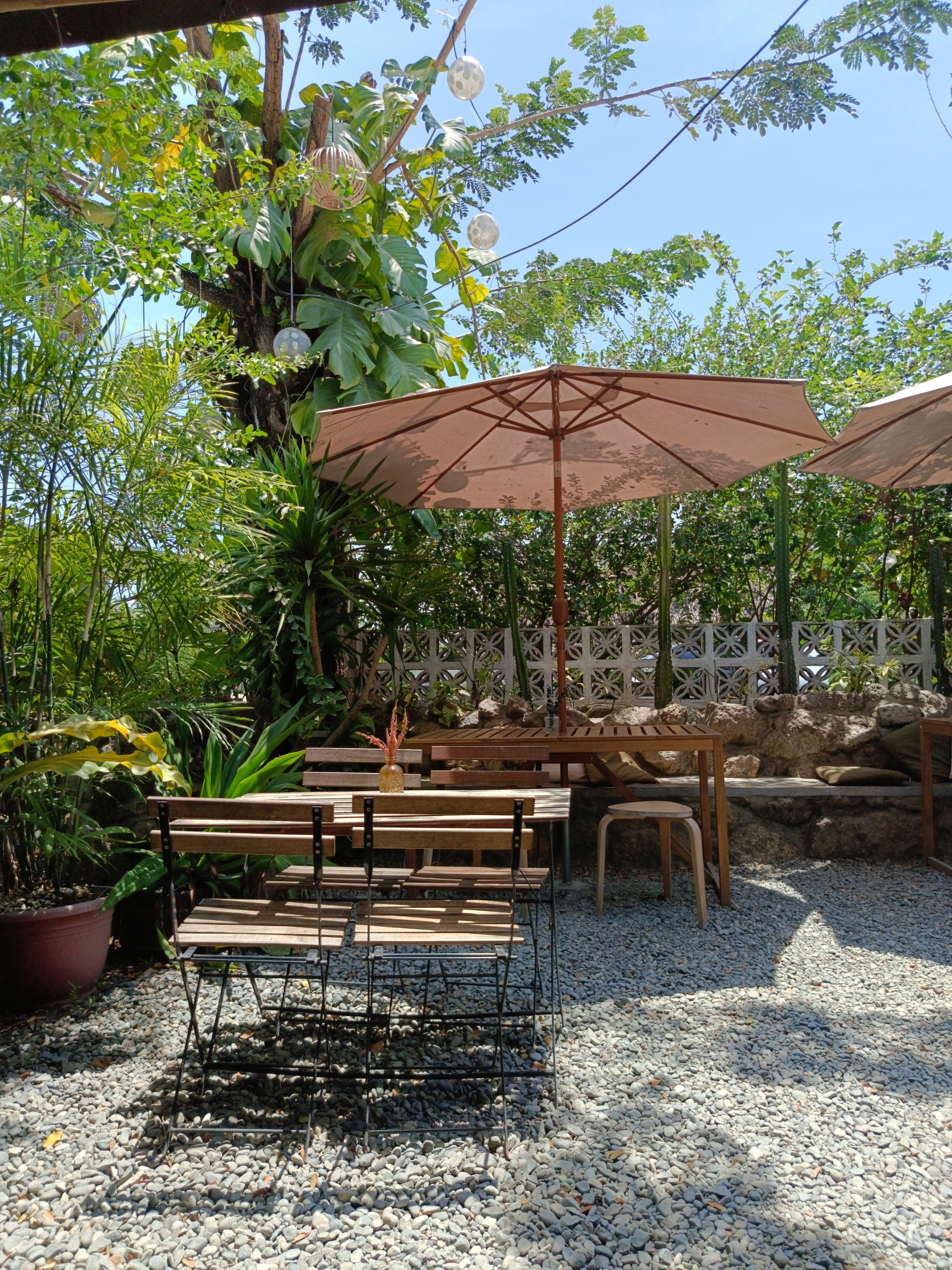
The High Res mode dedicated to capture 108MP photos doesn’t really pose that much of a difference. Sure, the photos may appear a tad but brighter but when looking closely, the highlights are overexposed.
Not just that, photos taken using the High Res mode generate massive files. I even took a single photo that is over 90MB in size.
The 3X zoom seems underperforming and inconsistent as well. The photos can look good and usable one time but frequently, it just appears oversharpened and heavily processed. The colors can be too saturated as well.
Low light photos taken using the realme 12 5G is also another yin and yang for me. When there is enough light, it can produce really impressive results but it can also struggle during the darker times when you feel like you really need it to perform as intended.
As for the selfies, I can say that I am quite happy with the phone’s performance. It may not be flagship level but it won’t let you down in your “me” moments.
The video is limited to 1080p at 30FPS for both the rear and front-facing cameras. I do believe that there’s some sort of EIS for the rear camera but the quality is nowhere near amazing.
So long, realme
One thing I really love about the midrange Android market is despite the competition price point, companies are really generous when it comes to battery and charging speeds. realme 12 5G is not an exception.
Packed with 5000mAh battery that supports 45W SUPERVOOC charging, quick battery drain and slow charging speed are a thing of the past. Being a heavy social media user, the realme 12 5G lasted me a whole day of use with a few more juice left before I reached out for its charger.
realme promises a 0-100% of charge in just 83 minutes. True to its claims, I was able to charge the phone from 20% to full in just 72 minutes. Impressive is an understatement.
You need to calm down, you’re being too loud
The realme 12 5G’s dual stereo speaker also has a feature called the Ultra Volume Mode that allows you to push up the volume level up to 200%. While it’s not necessarily bad, I find the audio quality to be a little bit harsh-edged and crunchy.
The bass is really lacking as well to the point that it kinda affects my music time with my current favorite bubble gum P-pop songs. The normal volume, albeit a little bit better, is not really an entirely different story. This just goes to show that just because it’s loud, doesn’t mean it’s a great speaker.
I think there’s been a glitch…or two?
Moving forward to speed talks, the realme 12 5G is powered by MediaTek Dimensity 6100+. Basic operations like browsing on social media is an easy feat for realme’s newest midrange device. Even multitasking seems smooth on this device, switching back and forth between apps hasn’t really been an issue on my end.
It does reload some apps, mostly games, when reopening them but I feel like that’s pretty normal for midrange android devices.
The gaming experience, however, is kind of underwhelming. When playing Roblox even on automatic graphics quality, I still experienced a considerably significant amount of frame drops. That became more frequent when I dialed up the graphics settings to maximum quality.
Surprisingly, I didn’t notice any frame drop when I played Asphalt 9 on default graphics settings and only a few occurred when I modified the settings to the highest graphics quality and 60FPS option.
As for the device’s temperature, the realme 12 5G may warm up during heavy use over an extended period, but it remains comfortable to hold. A brief rest allows the phone to cool down quickly.
You’ve got some tricks up your sleeves
Another thing that makes the realme 12 5G so interesting is the special features that come with it. Even though some of them can be viewed as plain gimmicks, some could be really useful. For example, the mini capsule 2.0 as realme likes to call it is an animation feature that is quite similar to Apple’s dynamic island, is nowhere near impressive and does not really improve the phone’s functions in any way.
On the other hand, the Snap Cards feature of the device which allows you to use your phone to store RFIDs by scanning the actual RFIDs could be a game changer for some people. Imagine you forgot your work RFID that records your attendance but hey, your phone is there to save the day! I believe things like these are what makes the realme 12 5G a fun device to have inside your pocket.
Other features worth mentioning include RAM expansion, dynamic button, and extra brightness.
Final Thoughts
To sum everything up, the realme 12 5G offers a wide spectrum of features a lot of people will love. With its unique aesthetic and color options, impressive sunlight display, and long-lasting battery life, it offers a holistic and fun experience for its users. . The device’s ability to deliver decent photos is also worth keeping in mind.
Its performance, although not perfect, still provides a satisfying user experience. To top all that off, it also has special features under its belt. With its competitive pricing, I will definitely recommend the realme 12 5G for people who love aesthetics and value functionality but do not want to break the bank.
Pricing and Availability
The realme 12 5G is the least expensive offering among the realme 12 series. Priced at Php 14,999, the handset comes with 8GB of RAM and 256GB of storage. You may purchase the device and get freebies on realme’s TikTok shop until April 30. The realme 12 5G will also be available on realme’s official Shopee and Lazada store on May 5 to 10.
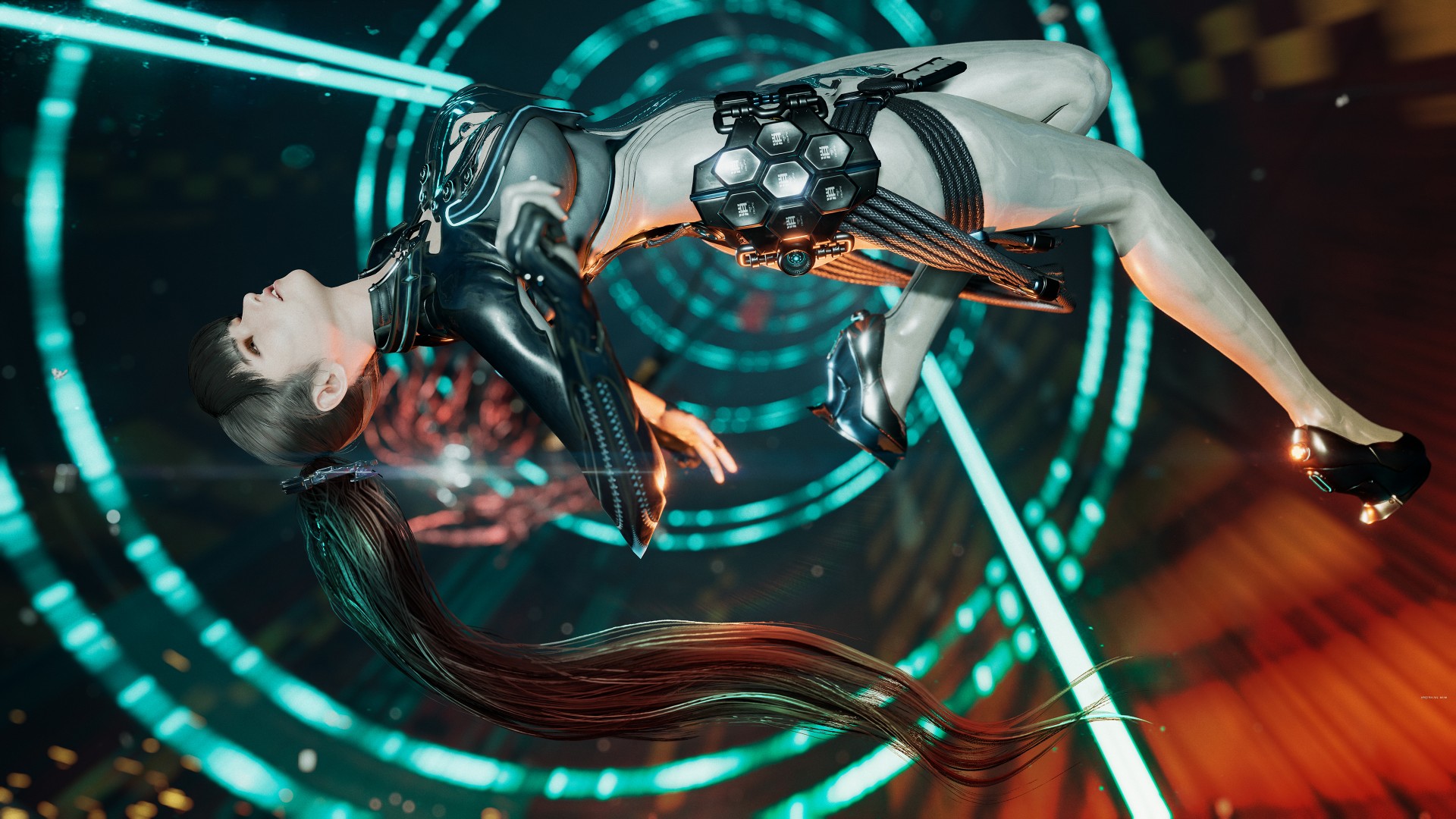
We didn’t have the best impression of Stellar Blade after spending time with the demo. Unlike certain players who poured a full game’s length of hours playing, our reception was lukewarm due to various reasons. But after finally having some time to focus on it, we now have a better understanding of its charm–and that goes beyond character design.
The game’s director has been ever-present in various gaming and tech news websites sharing nuggets about the game and reacting to the many comments made about the proportions of its female characters. That’s a rabbit hole we’re not diving into. Instead, we’re piggy-backing on one of his responses: Just pick up a controller and play it.
Steep combat learning curve
Stellar Blade’s combat didn’t click with us right away. But that’s because we approached it more like a hack-and-slash and not for the precise combo-parry sequence that it demands. A fellow reviewer aptly described our experience: It was a lot more “Soulslike” than we anticipated.
It took a while to get over that hurdle. For one, this writer isn’t particularly fond of Soulslikes. Skill issue. That’s tough considering a big part of this game’s charm is its combat. We can’t say that it fully clicked with us, but it certainly has its moments.
In combat, you have to pay attention not only to your enemy but also to how the protagonist, Eve, acts in different combo animations. If you’re not careful, you might find yourself getting hit during a lull in your combo.
You don’t have to memorize every single combo, although if you could, that’s certainly an advantage. We can compare the practice to memorizing combos of characters in Tekken, although at a milder rate.
Parrying is tricky but that’s not the only way to counter your enemies. One of the first skills you unlock is one that lets you get behind your enemy after they unleash a fatal attack (cued in with blue indicators) and hit back with your own counter. The animation looks so good that you’ll feel like an absolute badass every time you do it. It’s one of the moves that never got old throughout the entire playthrough.
As you progress through the game you’ll unlock ranged weapons that will expand your combat capabilities further. Hard combat enthusiasts should have a field day.
For more casual players, there’s no shame in switching to Story Mode which is what we did for about 70% of the playthrough. It’s easier, sure. But it can still present challenges especially during certain encounters.
The boss battles are TOUGH
We’re going to chalk this up again to skill, and perhaps patience, issue. But Stellar Blade’s boss battles are incredibly tough. Not to the point that you’ll want to throw your DualSense controller though.
What can make it frustrating is that the patterns of the enemies, especially the earlier bosses and mini-bosses, are easy to track. But they’re not exactly easy to deal with.
Parrying becomes an even more critical skill in these encounters. It’s one of the reasons why we opted to slide down the difficulty. Otherwise, this writer will never finish the game.
Pulling from different games, worlds
We have seen many compare Stellar Blade to the Nier games. Other than the setting, another big contributing factor in that comparison is the soundtrack.
During roaming, exploring, and combat, the music will change from time to time. However, they stick to this theme that’s a little eerie. It’s hard for us to describe but it’s almost like a crescendo that never quite swells up. It matches the game’s world perfectly — it feels hollow and devoid of life but still has a sliver of hope.
Combat isn’t the only thing you’re doing here. While it’s mostly linear at first, Stellar Blade offers a healthy mix of exploration, platforming, and puzzle-solving.
The puzzles don’t get in the way of the pacing. They’re quite engaging and offer a decent level of challenge. Roaming and exploration will yield you loot to improve your gear and stats. Occasionally, a Naytiba (the game’s primary foils) will surprise you for a good jumpscare moment.
Stellar Blade doesn’t reinvent anything nor does it offer anything particularly new or groundbreaking. But everything it borrowed from other games is retrofitted to match the game’s vibe and overall aesthetic. The result is a polished experience of familiar gaming mechanics.
Eve
Another aspect that did not grab us as much during the demo is the main character, Eve. The first hour of the game doesn’t do much to endear the player to her.
That slowly changes as you play through the game. Through a mix of cut scenes and world-building collectibles, you get a better sense of what Eve is, her mission, and ultimately her purpose.
If you’re familiar with the animé Violet Evergarden, Eve and that show’s protagonist share a similar character arc. They initially seem one note and bland, but the layers are peeled back as you learn more about them and how they relate to the world and the people around them.
Is she hot? Hell yeah. But as cliché as it is, she’s certainly more than what meets the eye.
Should you play Stellar Blade?
Unlike the PlayStation 5 exclusive that immediately preceded it, Stellar Blade has plenty in common with past PS5 exclusives — visually captivating, cinematic experiences, with satisfying gameplay.
Its level of challenge is closer to Sekiro and Bloodborne but it’s also not quite as difficult. In the same category but certainly not in the same stratosphere.
It also has an alluring charm that goes beyond its aesthetics. As mentioned earlier, nothing about it is particularly new or groundbreaking. But it’s polished and cohesive. There’s something about the overall feel of the game that draws you in and makes you want to see it through.
Stellar Blade is a Day 1 purchase if you’re up for the challenge. And if you consider the game director’s goal of having a high quality AAA console game from South Korea which is dominated by PC and mobile gaming, we say they did just that. Now, it’s just up to us to pick-up the controller and play.
Reviews
Challengers review: A thrilling drama wrapped as a tennis anime
Catch it in Ayala Cinemas starting April 24th

Tennis is more than just hitting a ball really hard with a racquet. There are player tics, serving techniques, mind games, and, of course, drama off the court. Challengers, starring Zendaya, takes the entire game and turns it into a dramatic thriller worthy of Wimbledon.
In Challengers, Art Donaldson (Mike Faist) is an aging tennis superstar desperate for one more big win. His wife Tashi (Zendaya), a retired tennis star in her own right, does everything to coach Art back to his winning ways. Opposite them is Patrick Zweig, a former-friend-turned-rival, facing Art in the final match of a Challenger.
As premises go, Challengers seemingly presents a straightforward sports drama. It’s a simple one-versus-one, after all. However, the film’s 2-hour-plus runtime hides a more complex drama.
The second-strangest ménage à trois in film
The film starts in media res: the first set of the final match. It doesn’t tell you who Art, Patrick, or Tashi is. It’s just a friendly match. There are, however, questions abound. Why is Zendaya’s character looking intently at one of the players? Why is the other player concerned that she is looking at his rival and not him? Who are these people?
Before you can ponder each question, the film takes you through multiple time jumps. The earliest (and longest) of which — thirteen years ago — sets up the story. Art and Patrick are two best friends and tennis prodigies teaming up to decimate the competition at their school. Everything changes when the two friends catch a match of another young prodigy, Tashi Duncan.
Both friends engage in a friendly competition to see who can successfully flirt with her. The sequence ends in the second-strangest ménage à trois committed to film. (To see the strangest one, catch Alfonso Cuarón’s Y tu mamá también, a clear inspiration to Challengers.)
The time jumps don’t end there. The story quickly volleys back and forth between different times in the past and the present, including years, months, weeks, and even hours ago. Sometimes, the skips result in the cinematic equivalent of whiplash from watching a tennis ball rapidly travel from left to right. But if you just follow the ball, it ends with one of the most thrilling, edge-of-your-seat dramas this year.
Blink and you’ll miss it
Despite how creative the time skips already are, Challengers shines with its subtler elements: the tiny movements, the tics that seasoned sports watchers can catch. Much like how a play-by-play commentator directs a viewer’s attention to what makes a player tick, the film subtly shows you elements of an even deeper story that it may or may not expound on.
Early on, Challengers shows a blink-and-you’ll-miss-it scene featuring Tashi’s knees. If you weren’t paying attention, you might have missed a scar from a surgical incision, hinting at why Tashi retired from the sport.
In that particular example, the film does dwell on it a bit in a past flashback. However, there are plot points that the film just drops on audiences with nary an explanation. For example, you might see telltale injection marks up Patrick’s wrist or a short-but-telling rehab session for Art. The film drops these nuggets only for the viewer to ponder. They’re short, but they paint a compelling picture to complement the action on the court.
It’s a tennis anime
In essence, Challengers is just about a tennis match between two emboldened competitors. However, like an anime battle that takes ten episodes to resolve, the film understands that the sport is not just about results: it’s about all the tiny movements, strategies, and dramas. If Wimbledon was this thrilling all the time, I should probably tune in a lot more.
Challengers shows exclusively in Ayala Cinemas starting April 24th.
-

 Events2 weeks ago
Events2 weeks agoStellar Blade: PlayStation taps cosplayers to play Eve for game’s launch
-

 Features2 weeks ago
Features2 weeks agoFortify your home office or business setup with these devices
-

 Accessories2 weeks ago
Accessories2 weeks agoLogitech unveils G Pro X 60 gaming keyboard: Price, details
-

 Reviews1 week ago
Reviews1 week agorealme 12+ 5G review: One month later
-

 Gaming1 week ago
Gaming1 week agoNew PUMA collection lets you wear PlayStation’s iconic symbols
-

 Deals2 weeks ago
Deals2 weeks agoTCL P635 TV: Big savings for TCL’s anniversary
-

 Accessories1 week ago
Accessories1 week agoMarshall Major V: Reasons Why I Love It
-

 Gaming1 week ago
Gaming1 week agoMore PlayStation 5 Pro specs have been leaked



